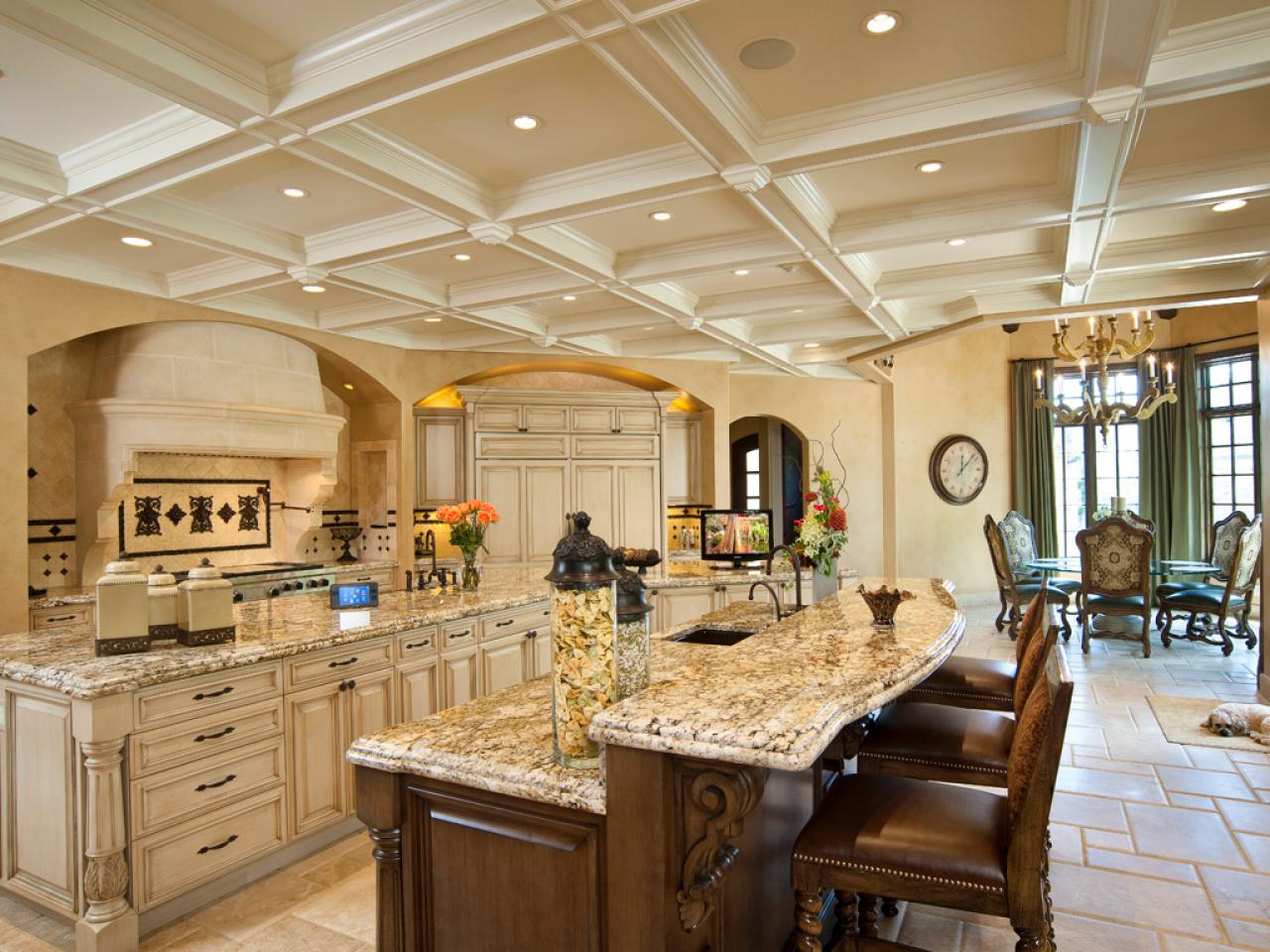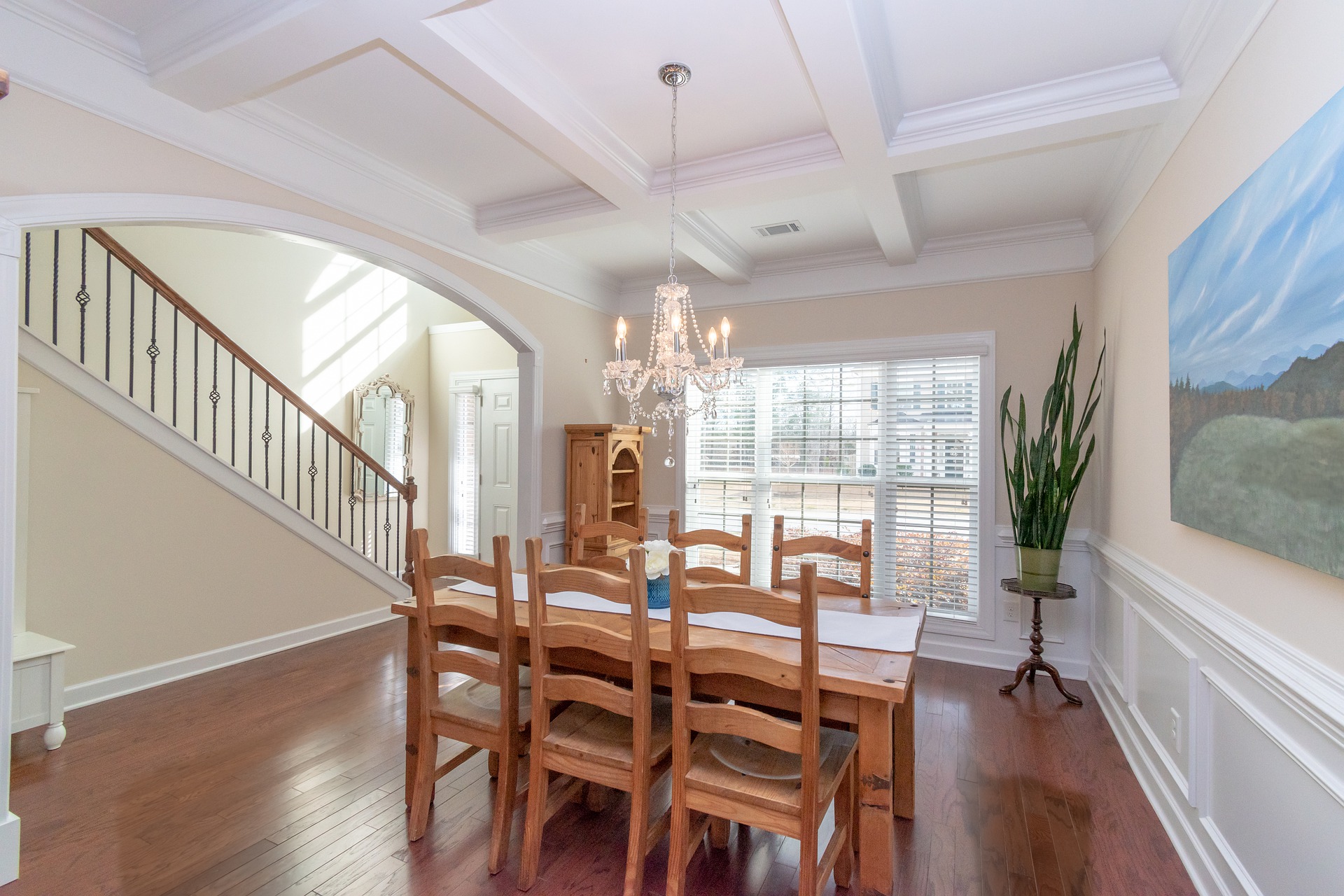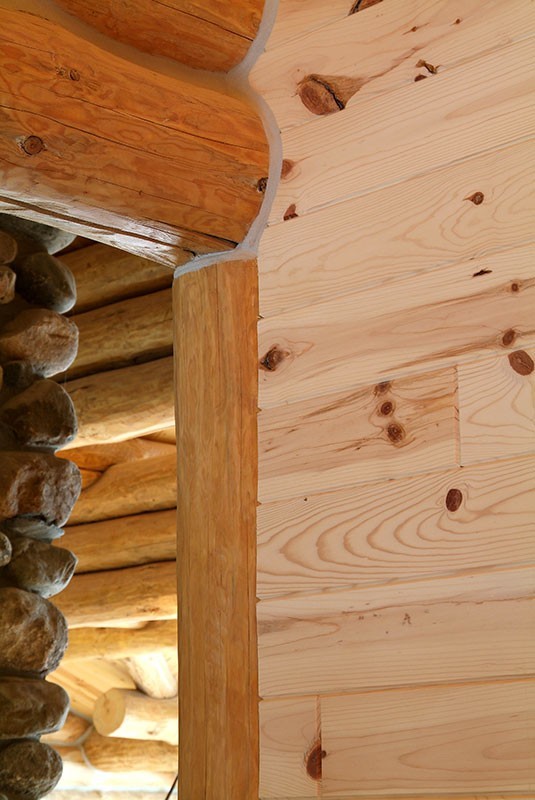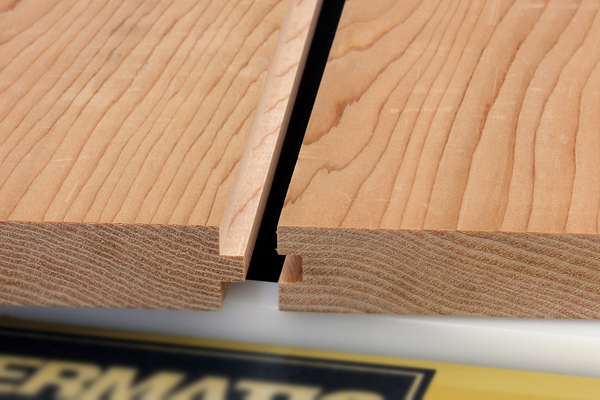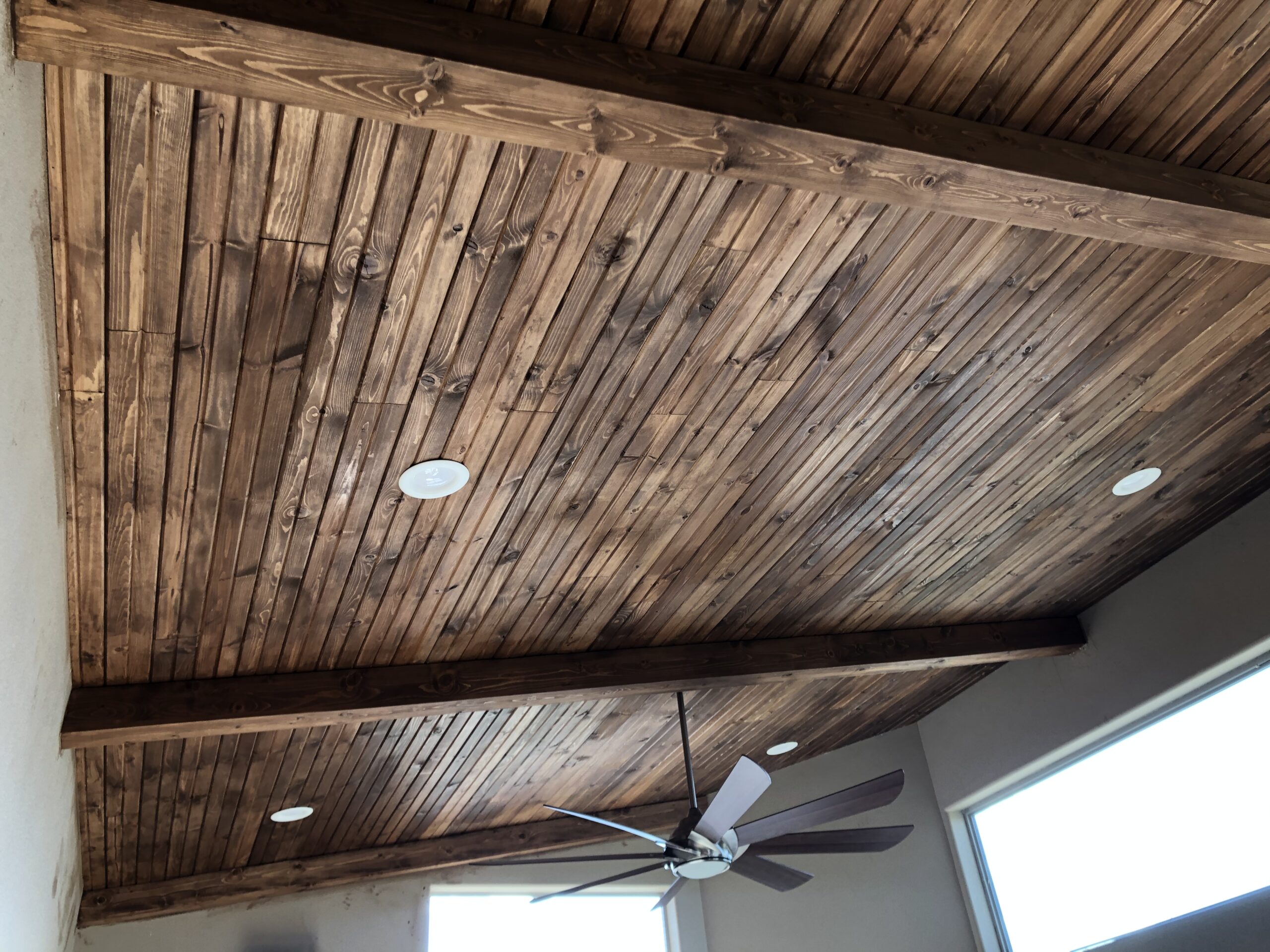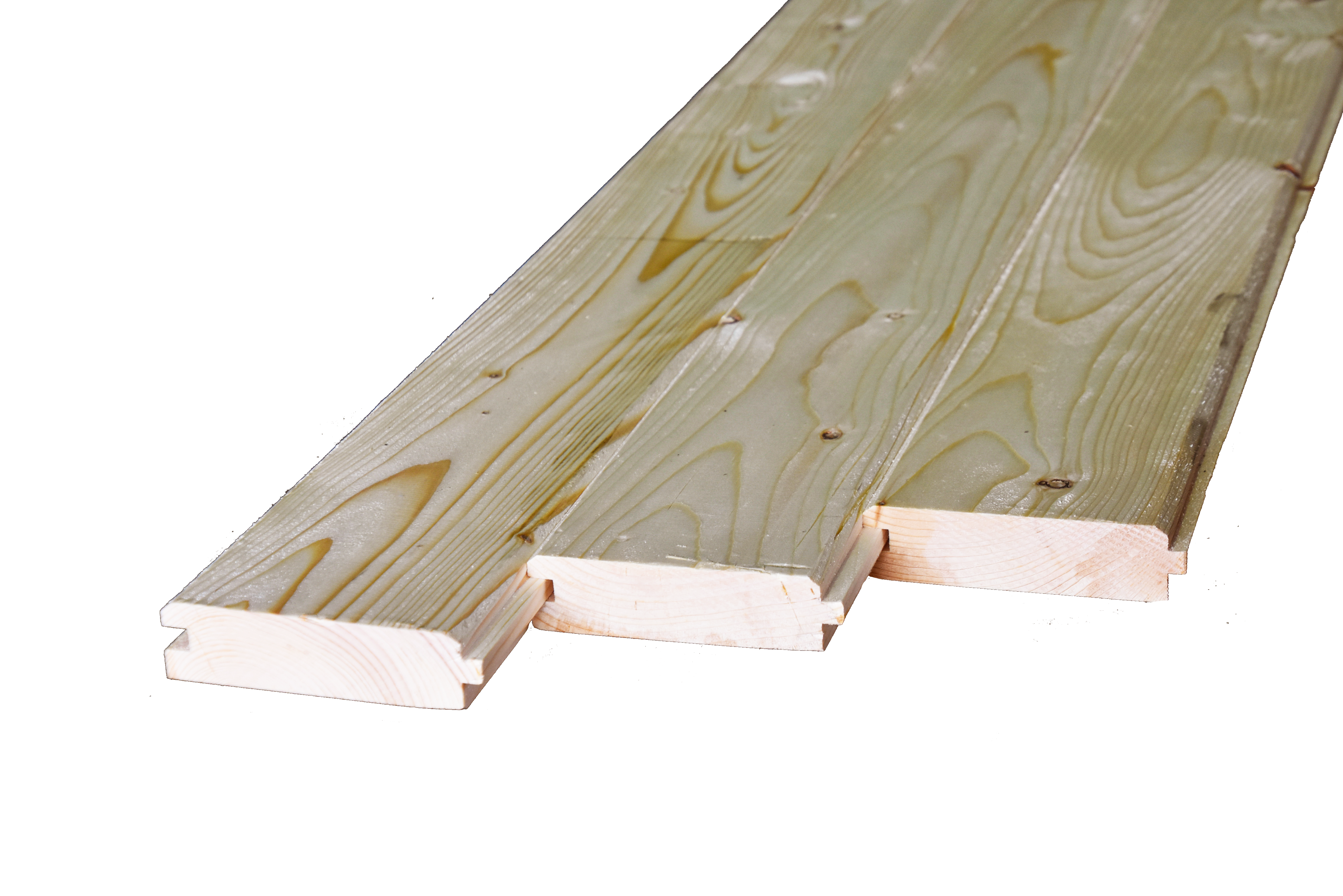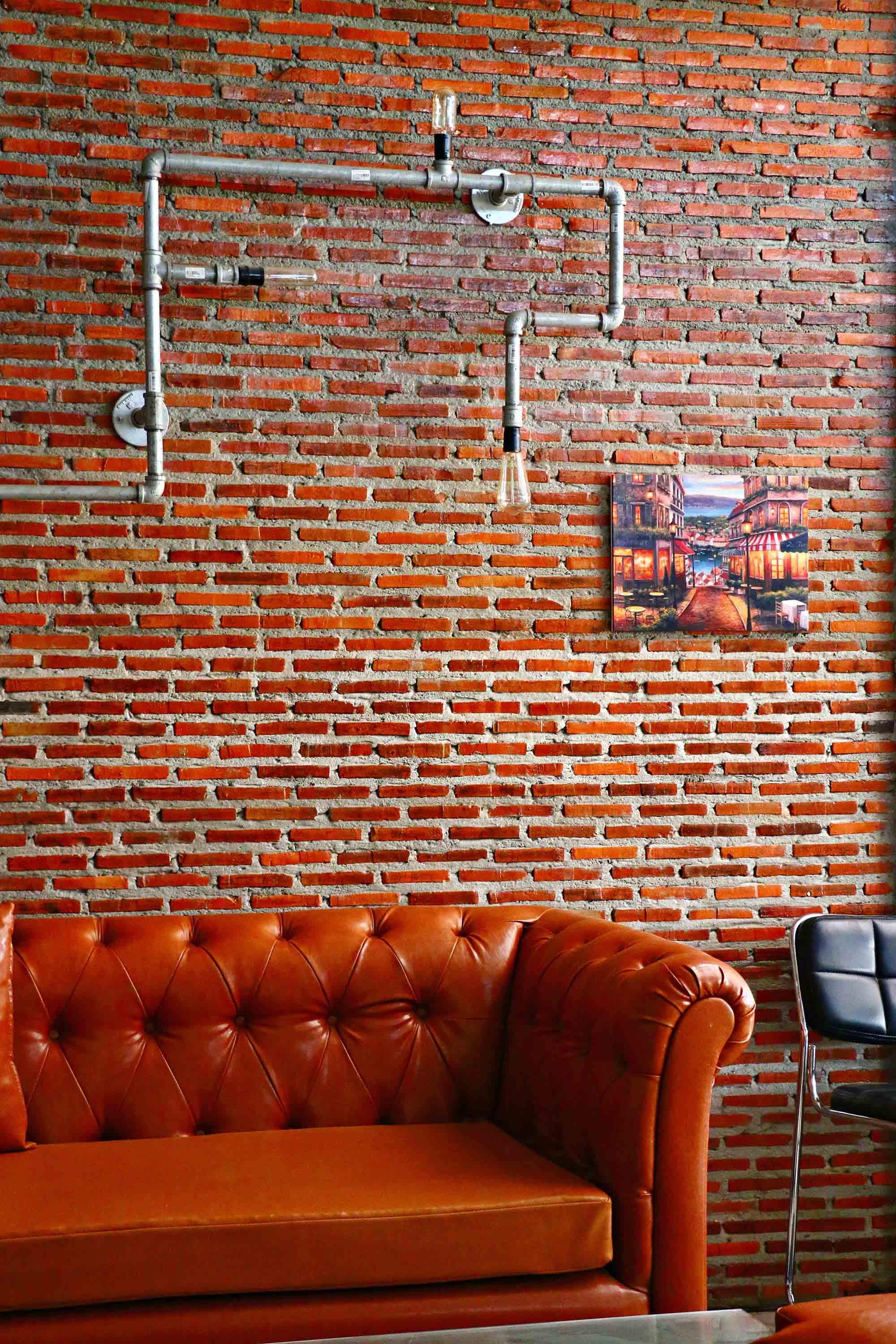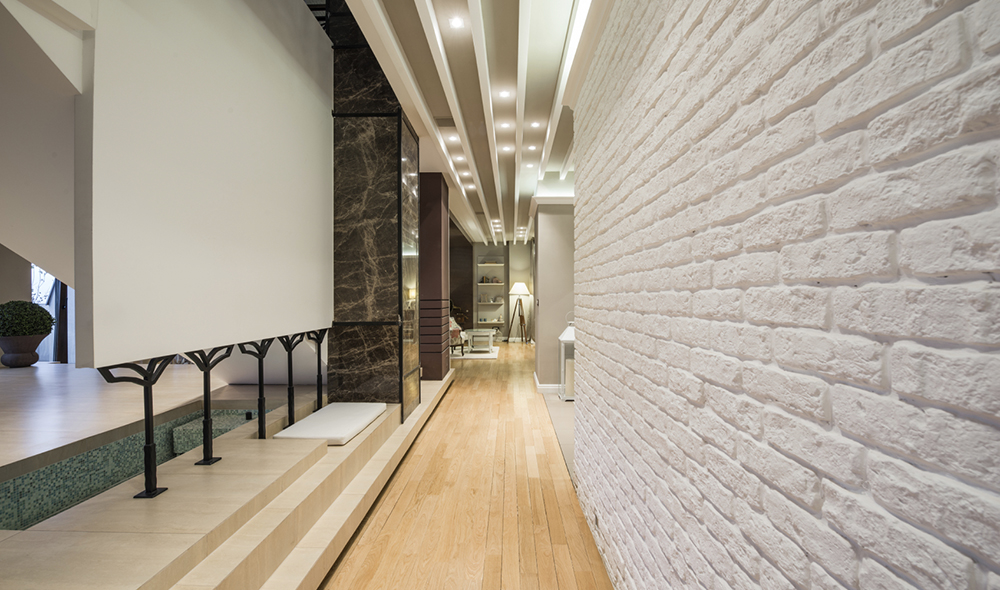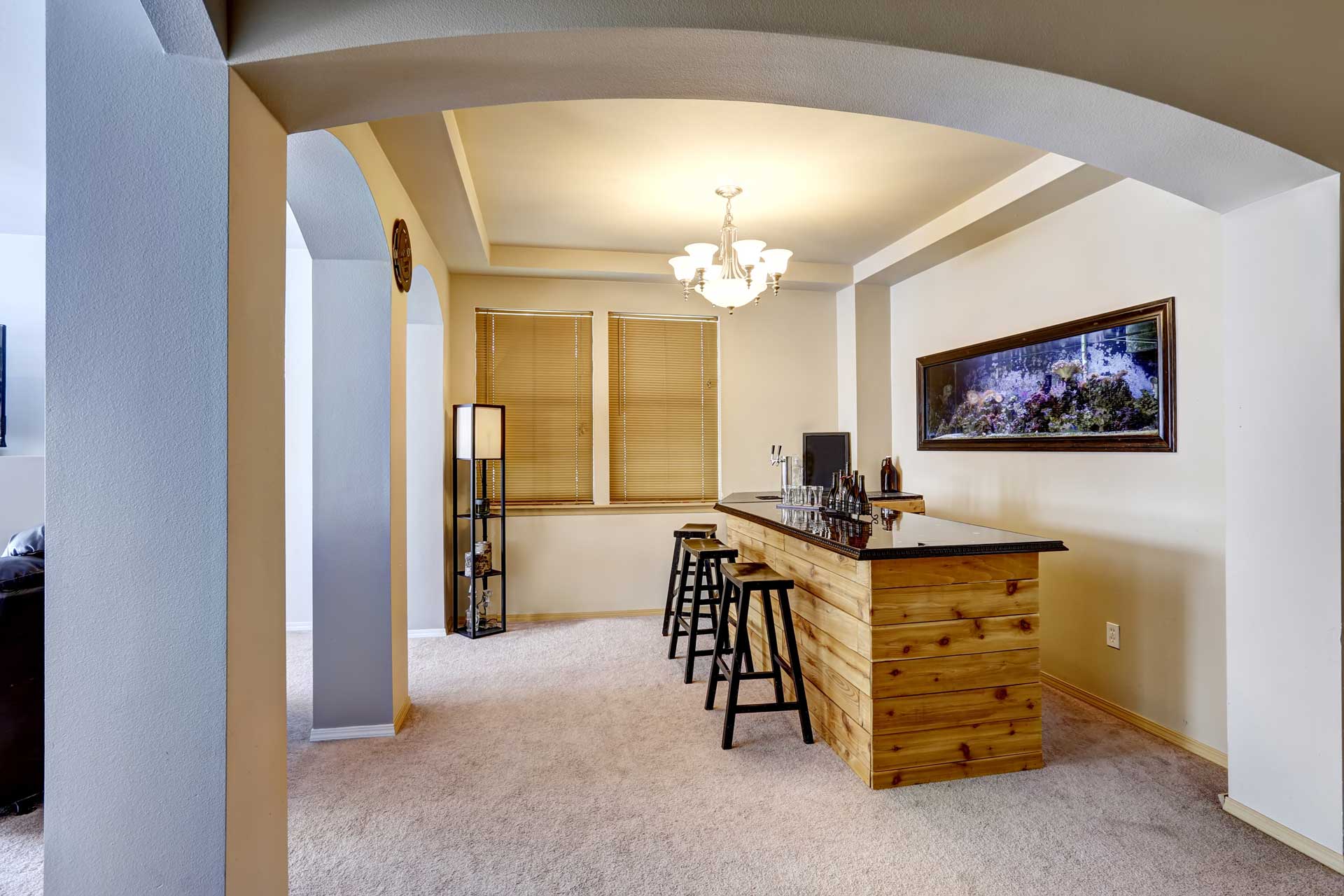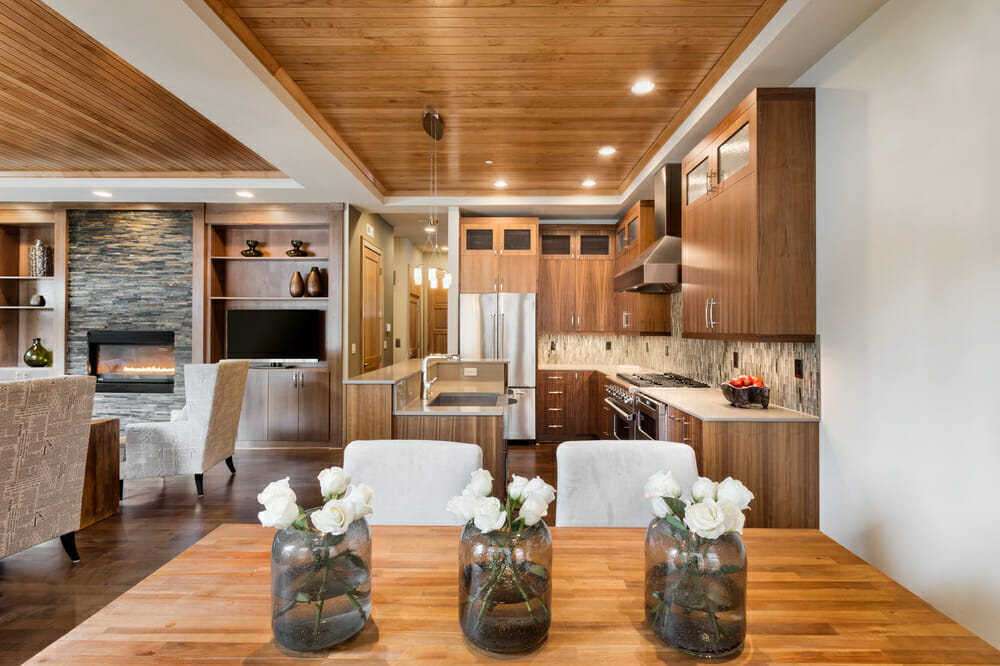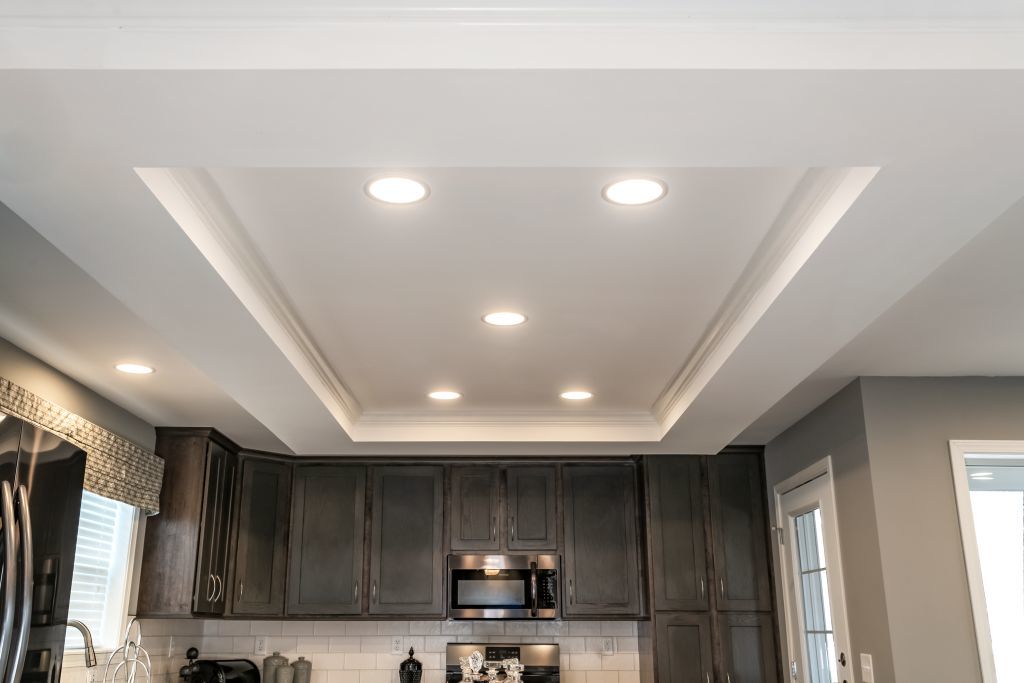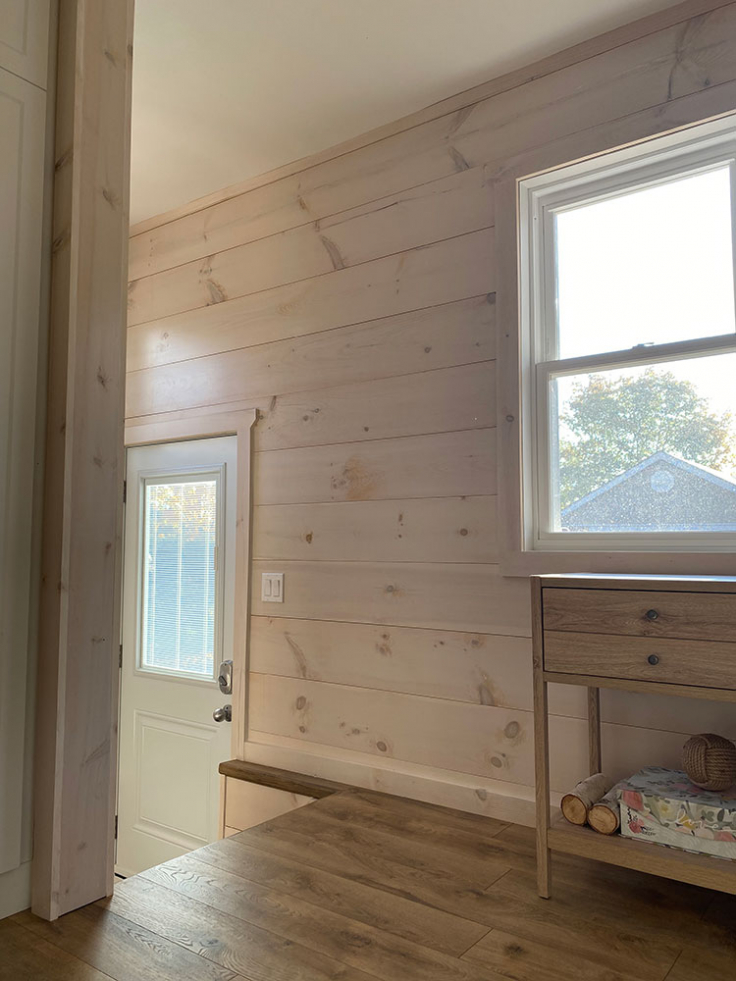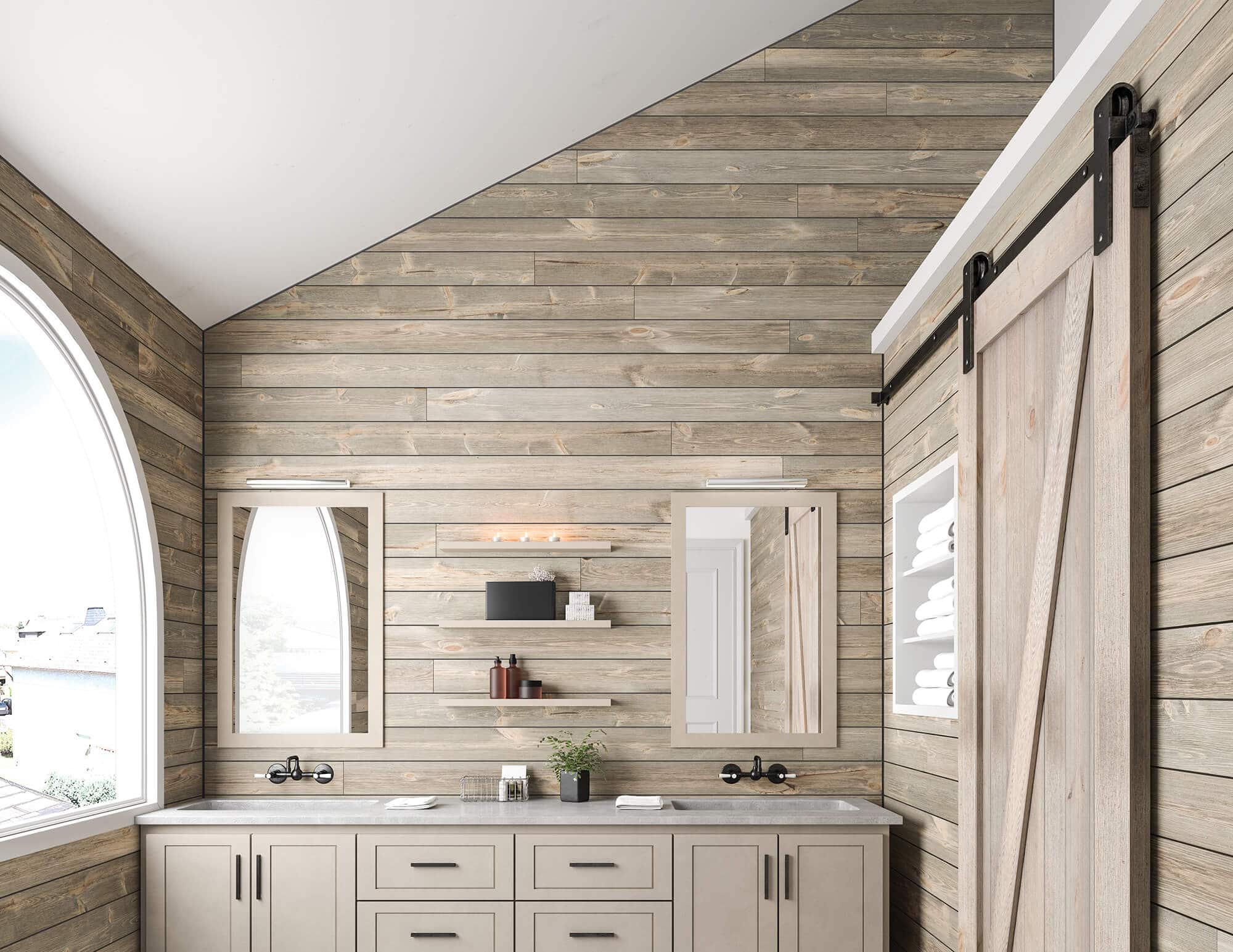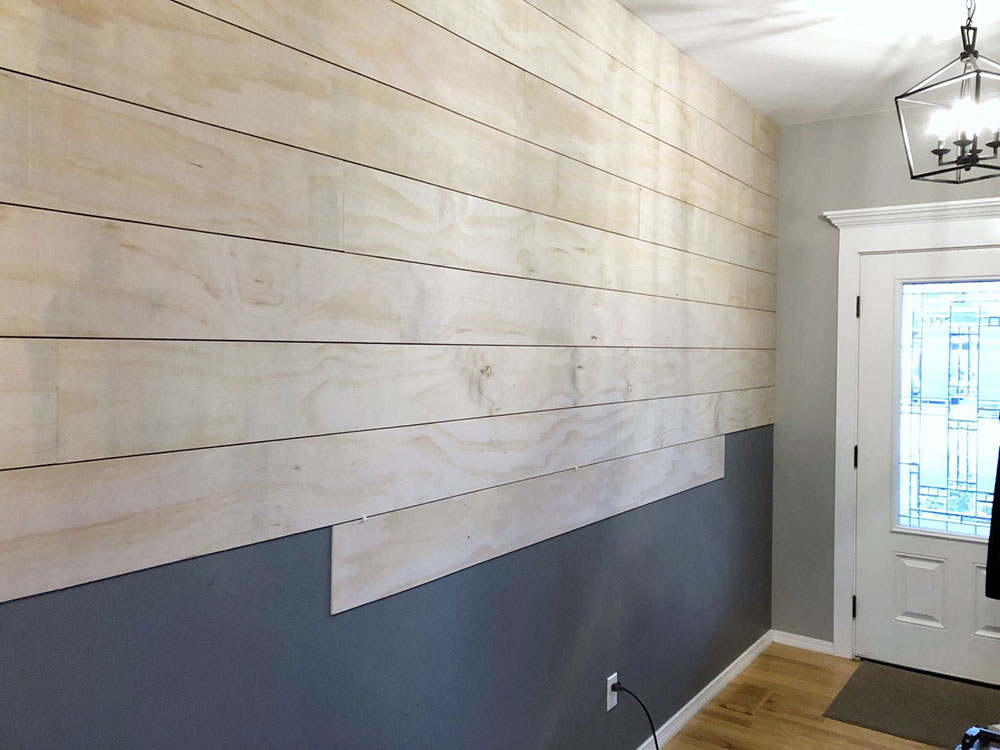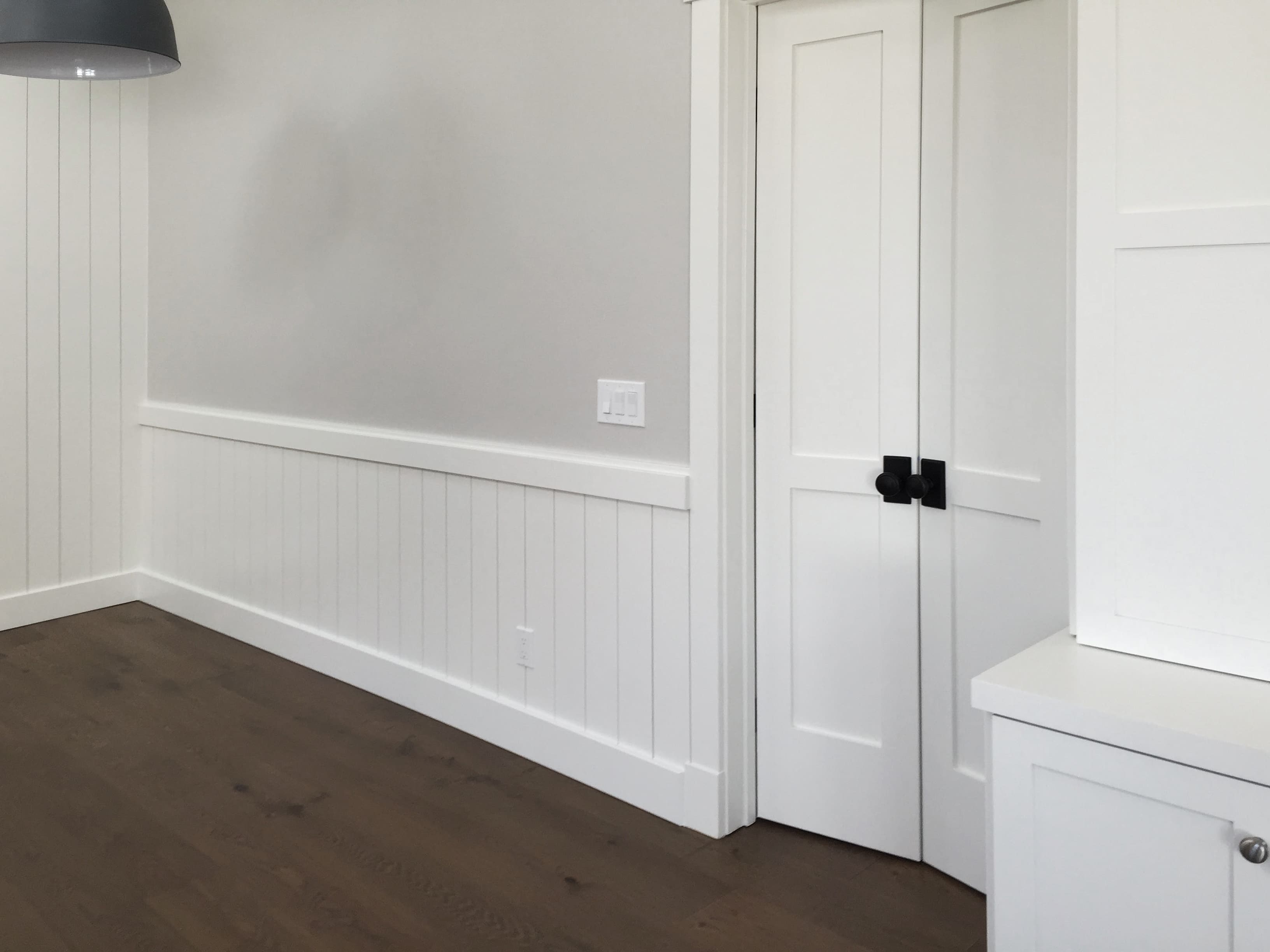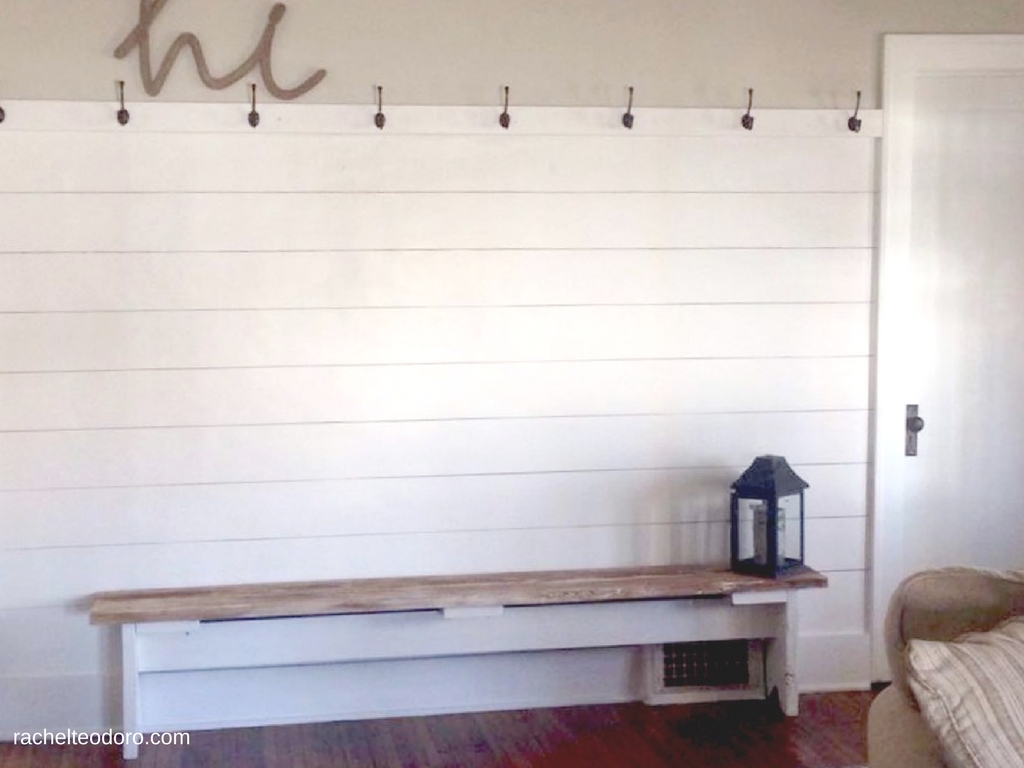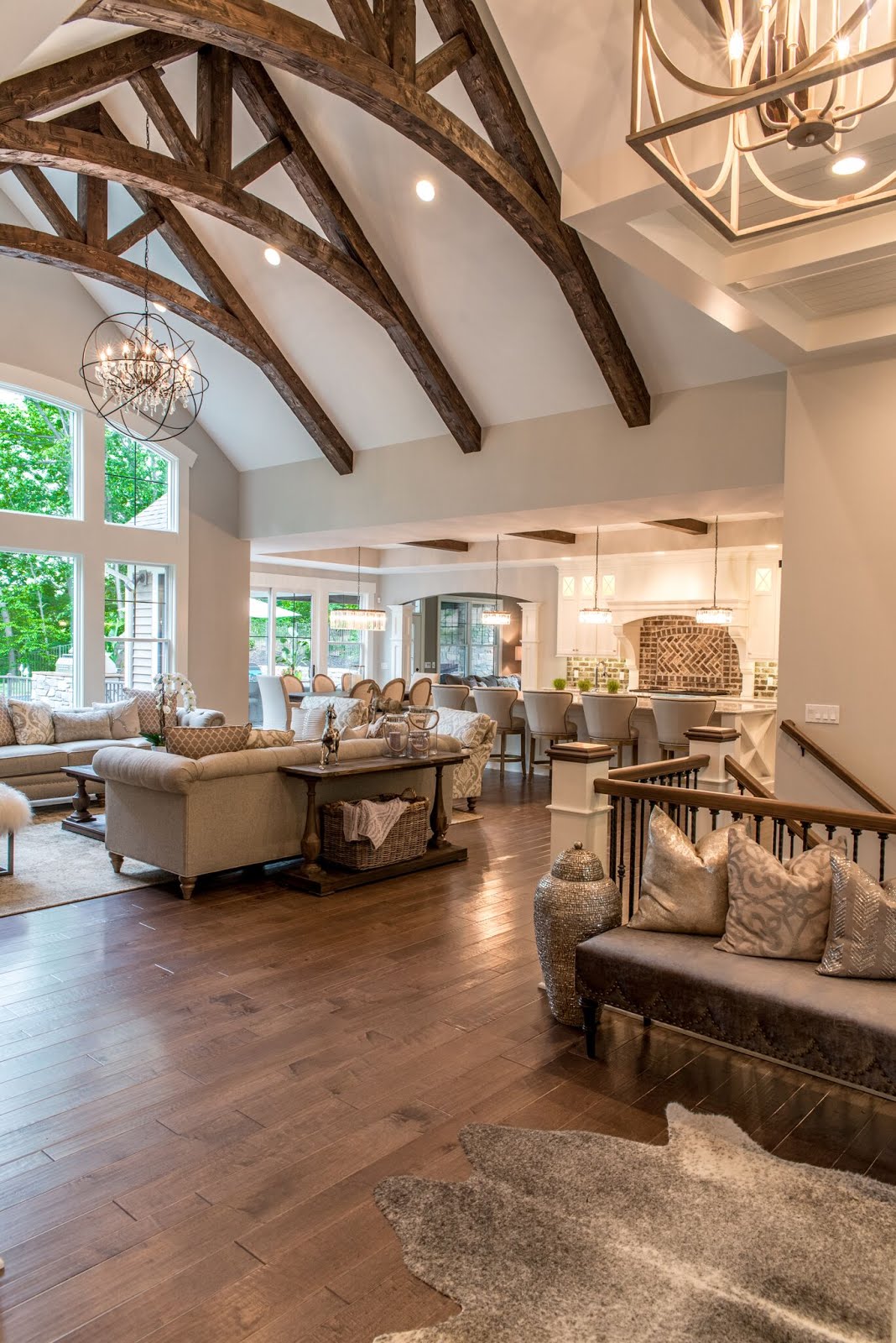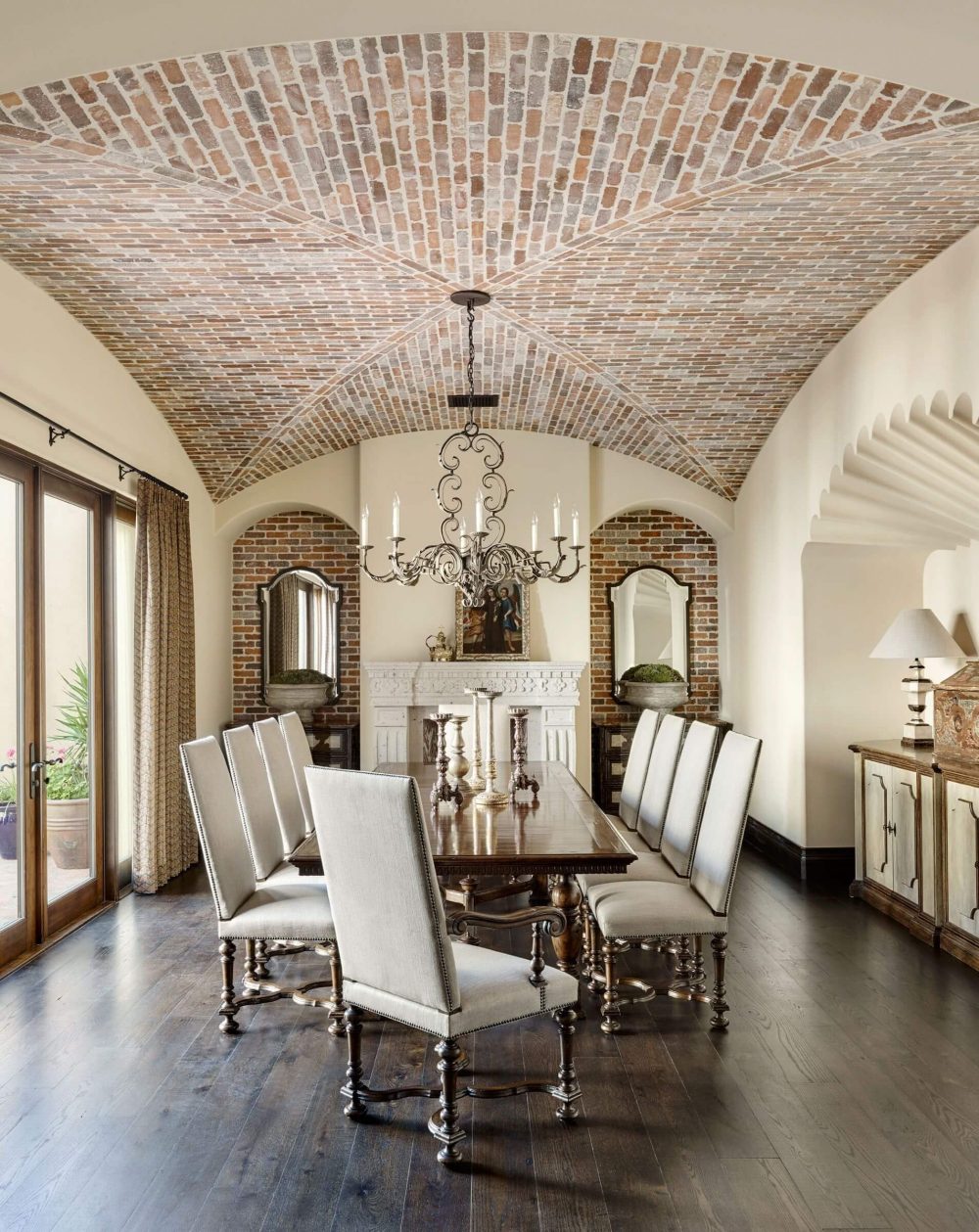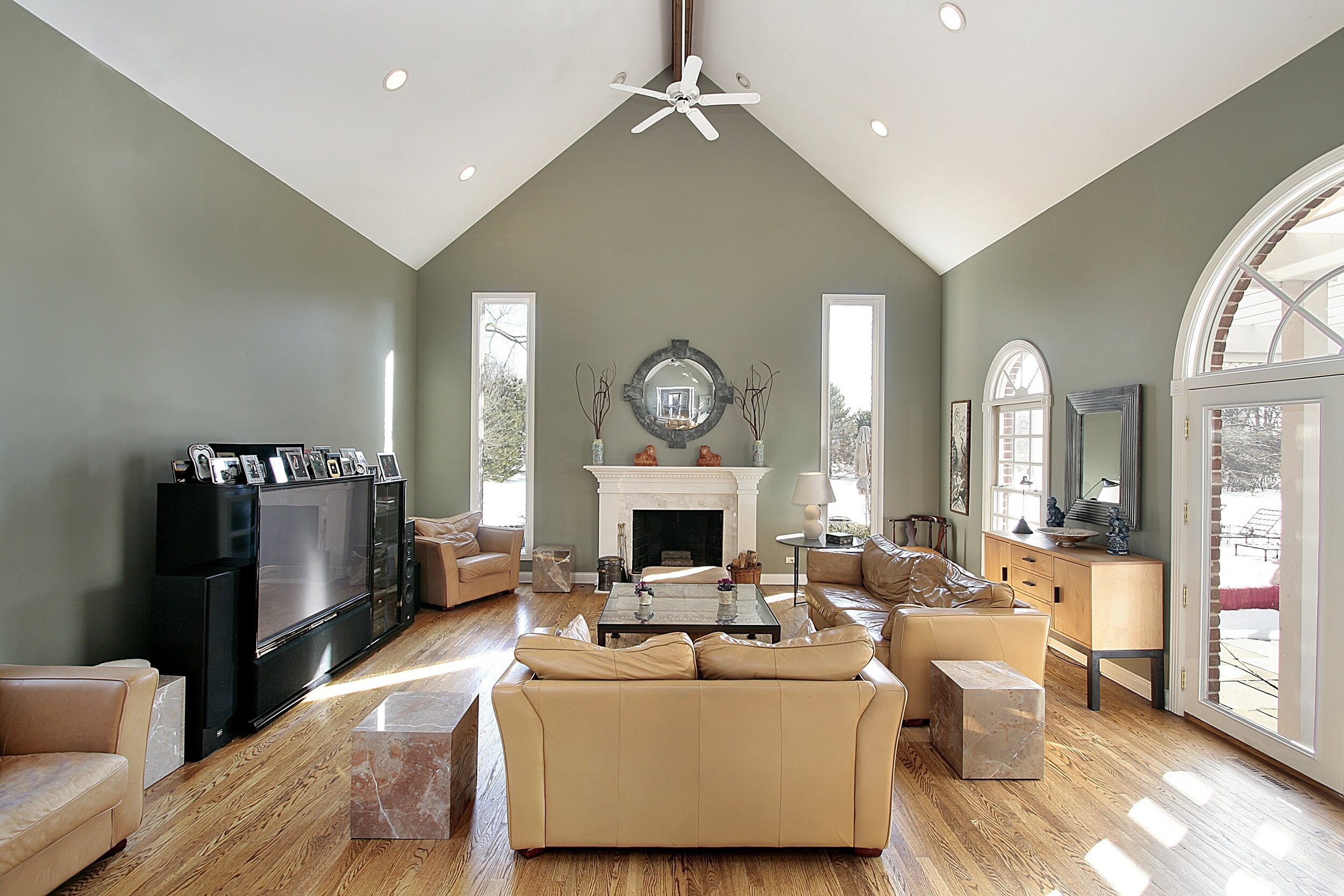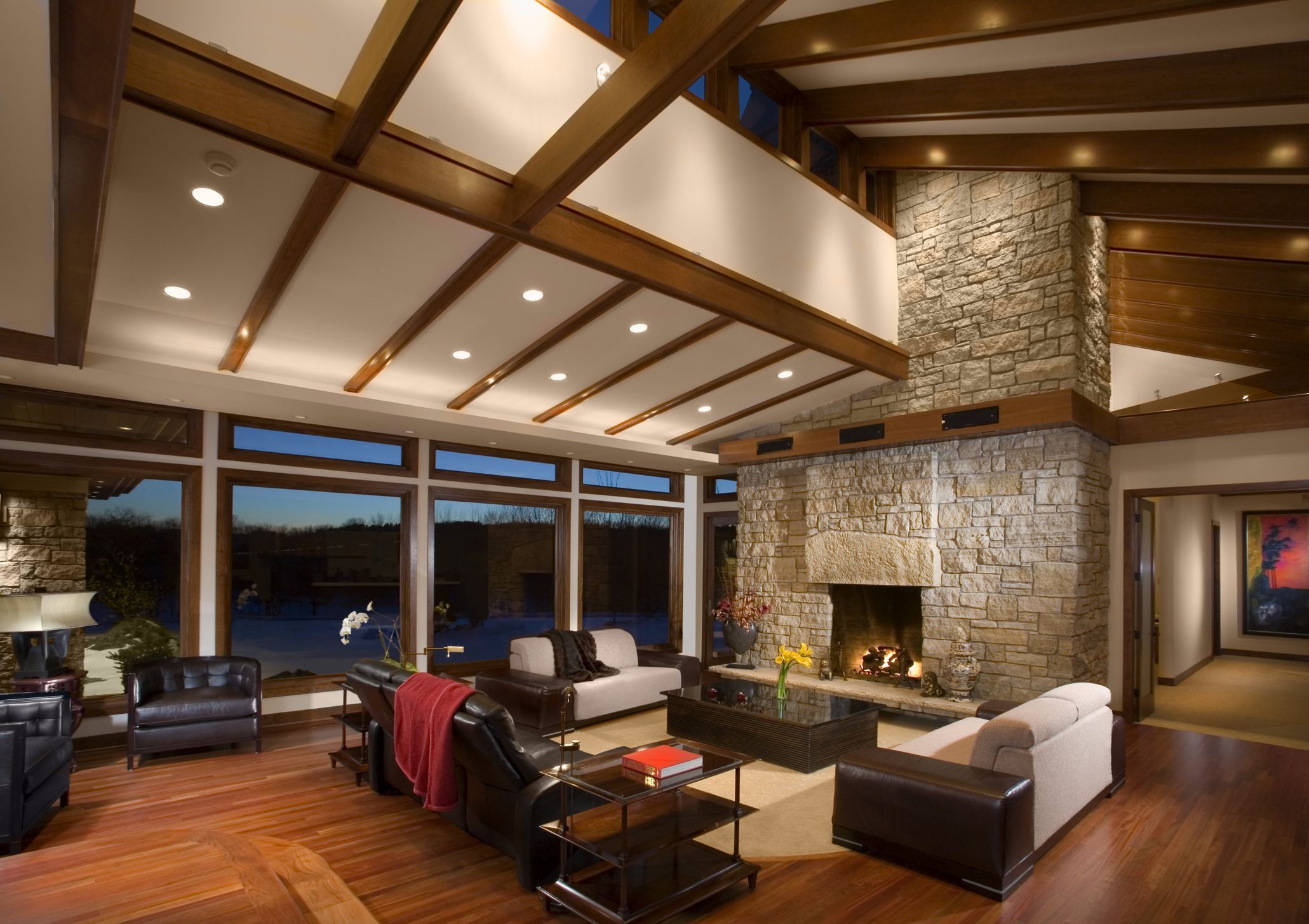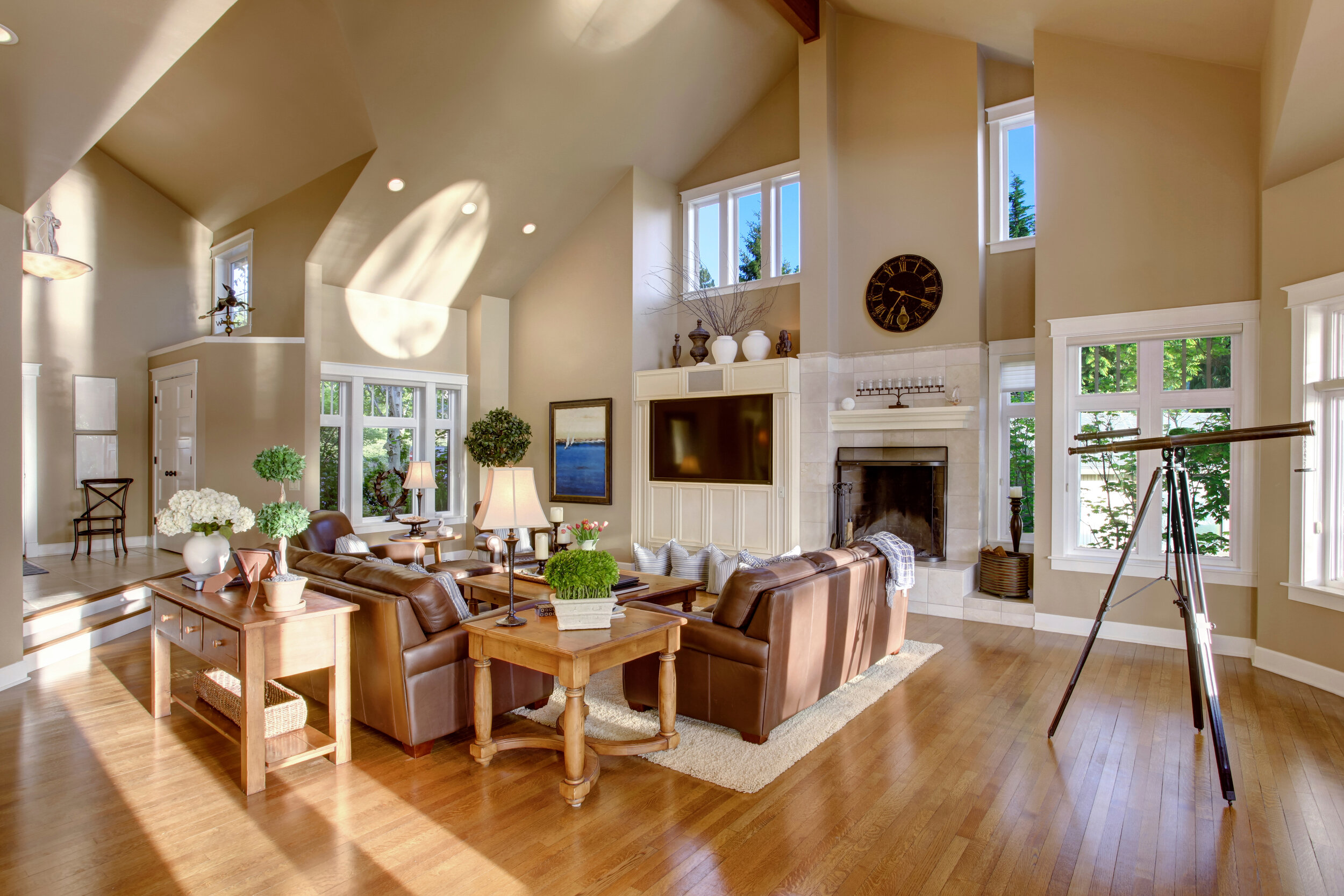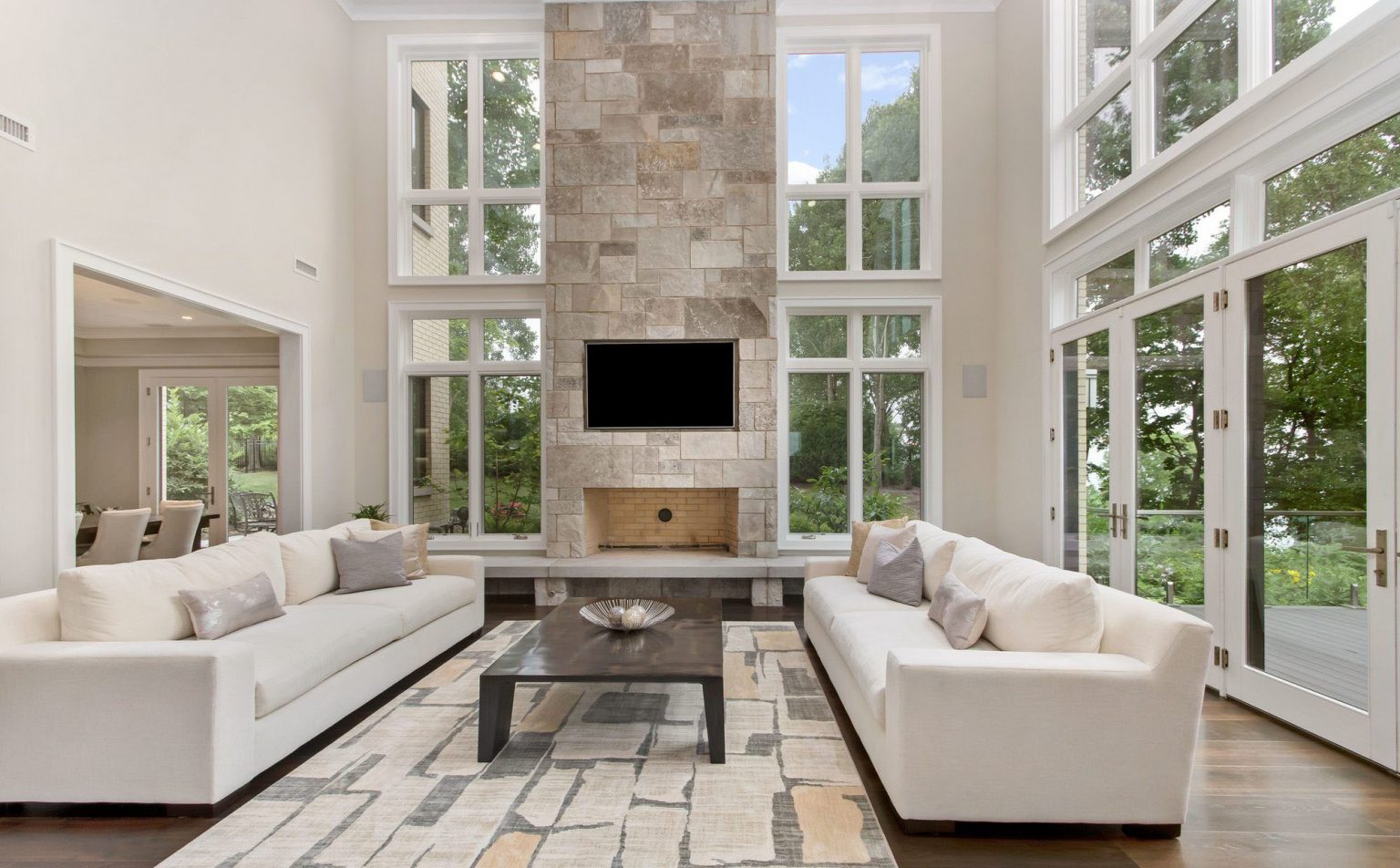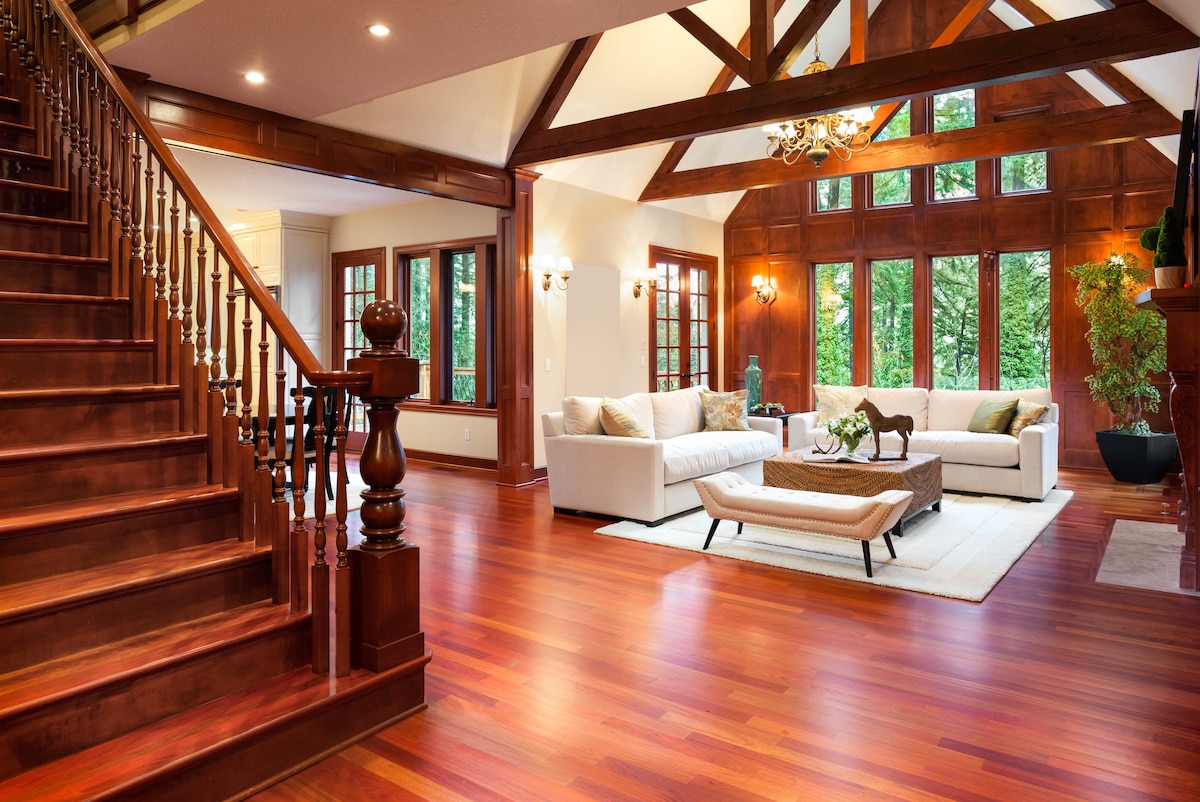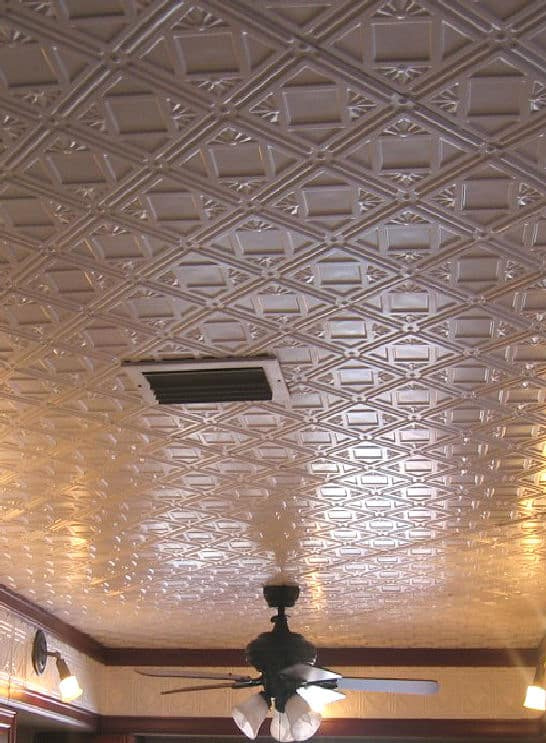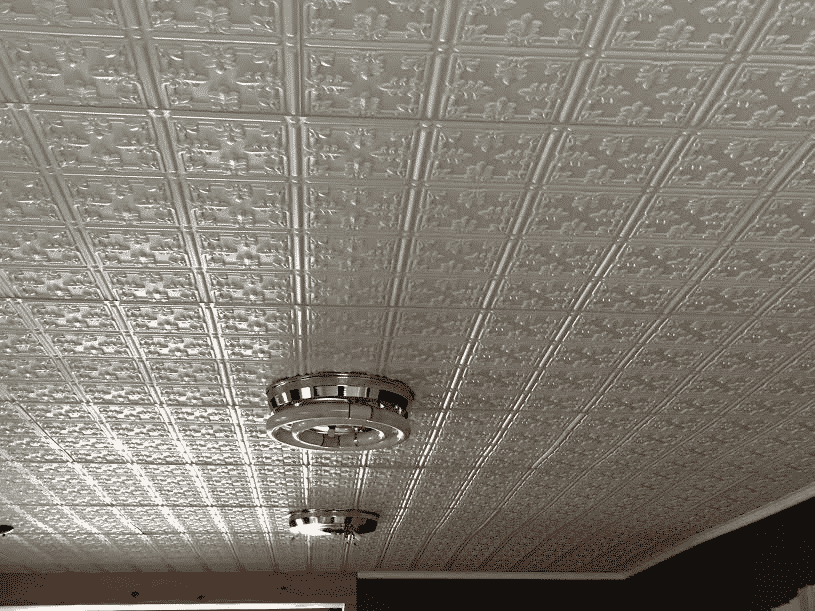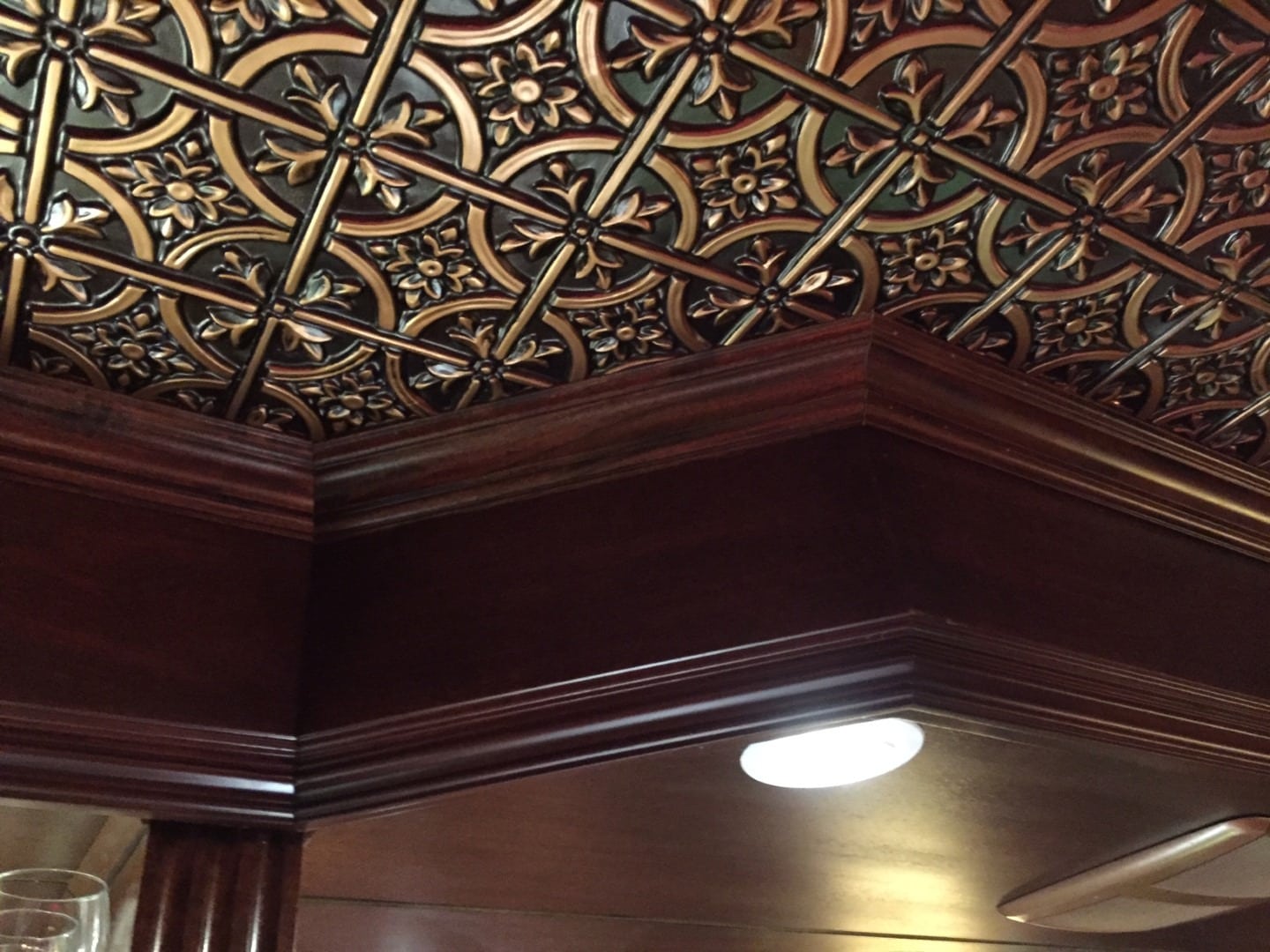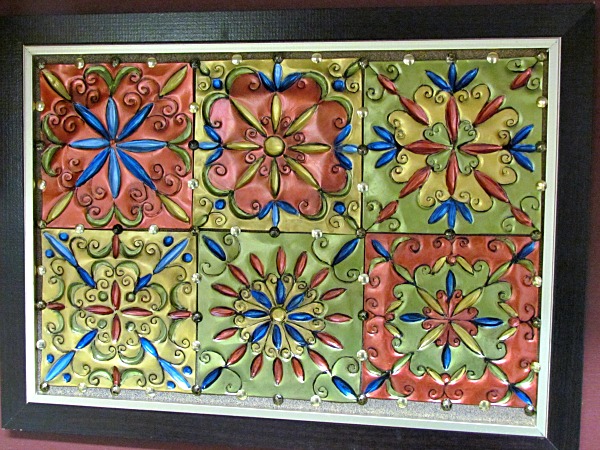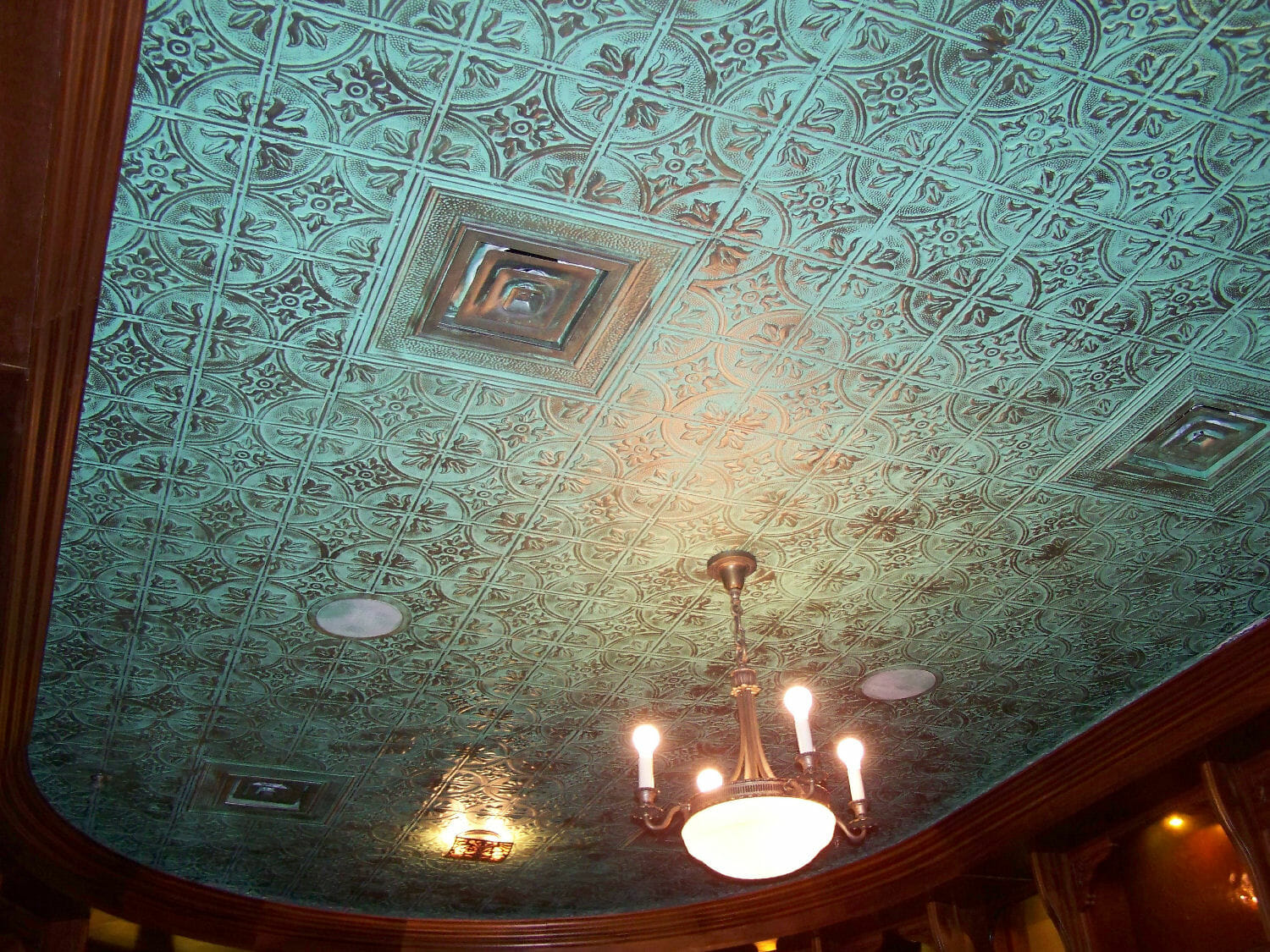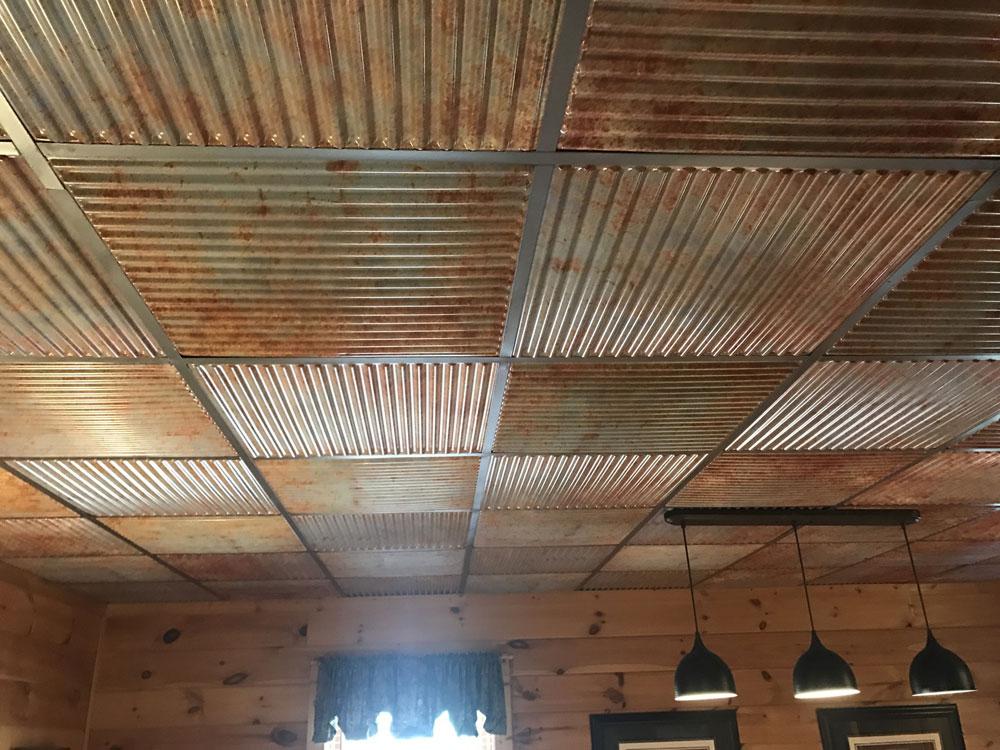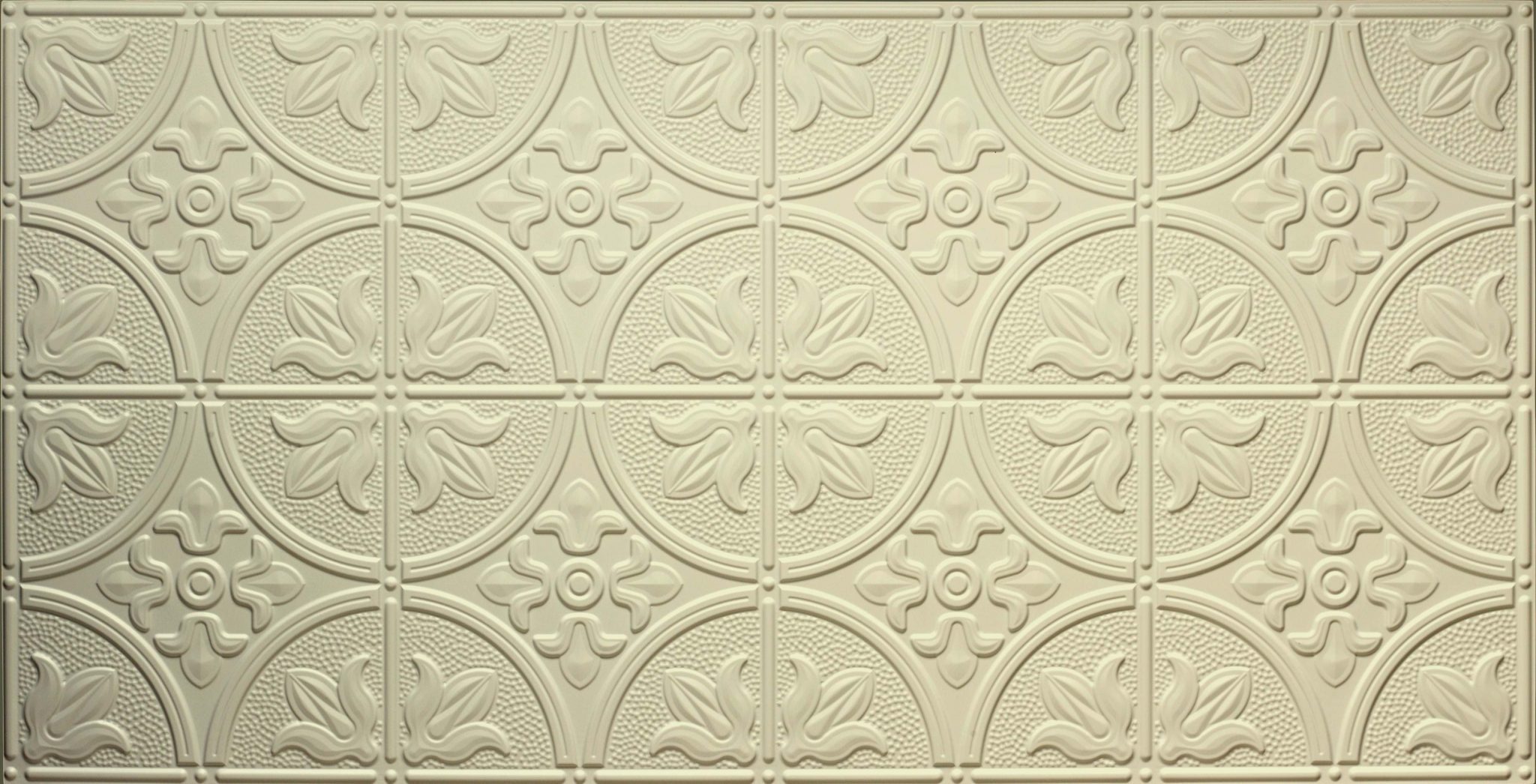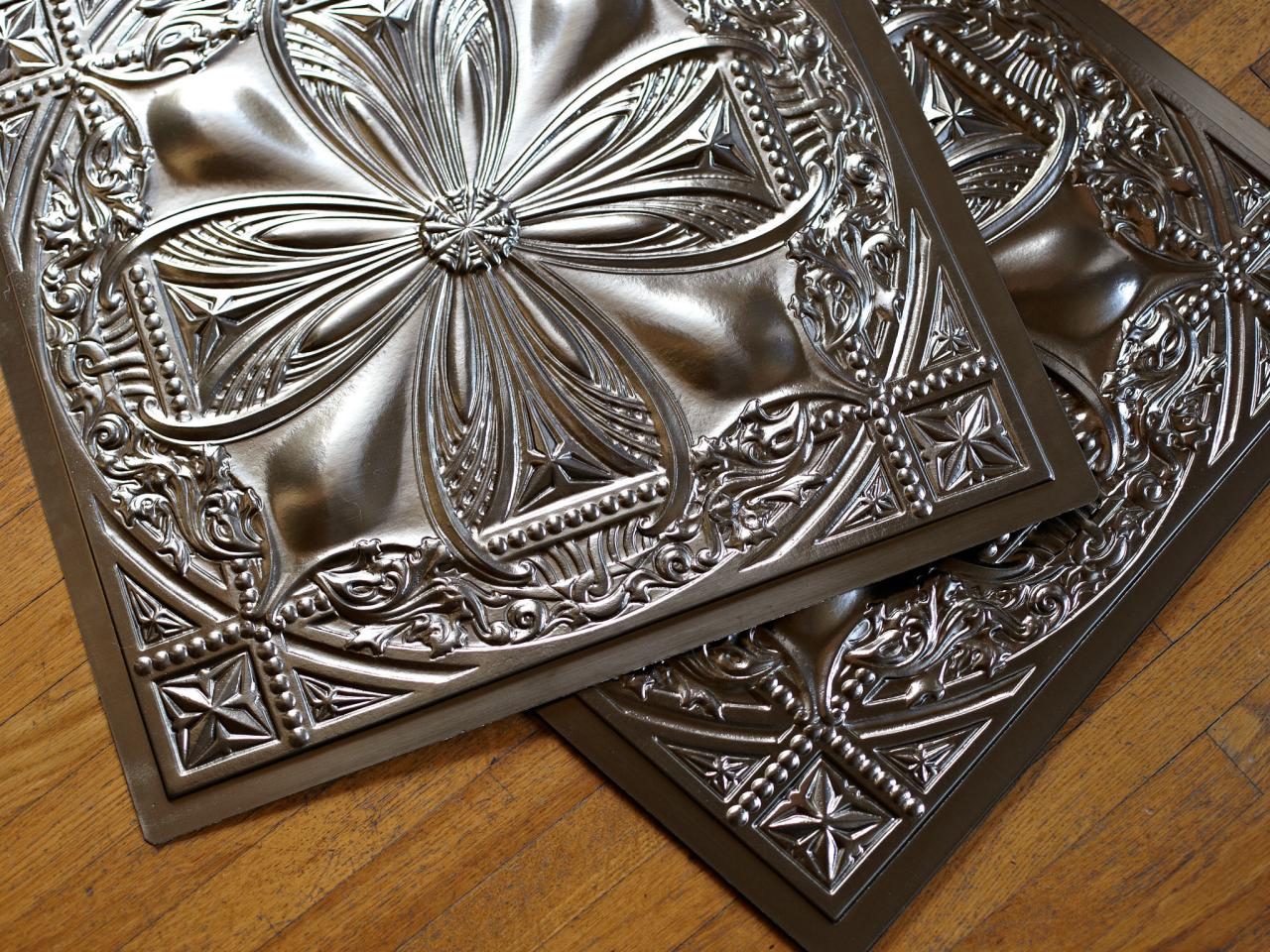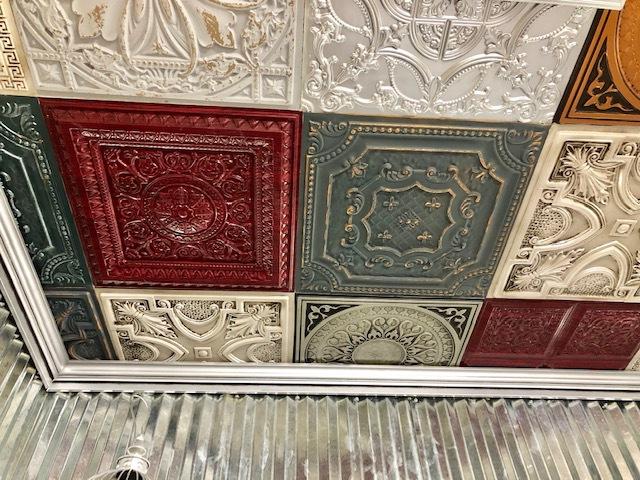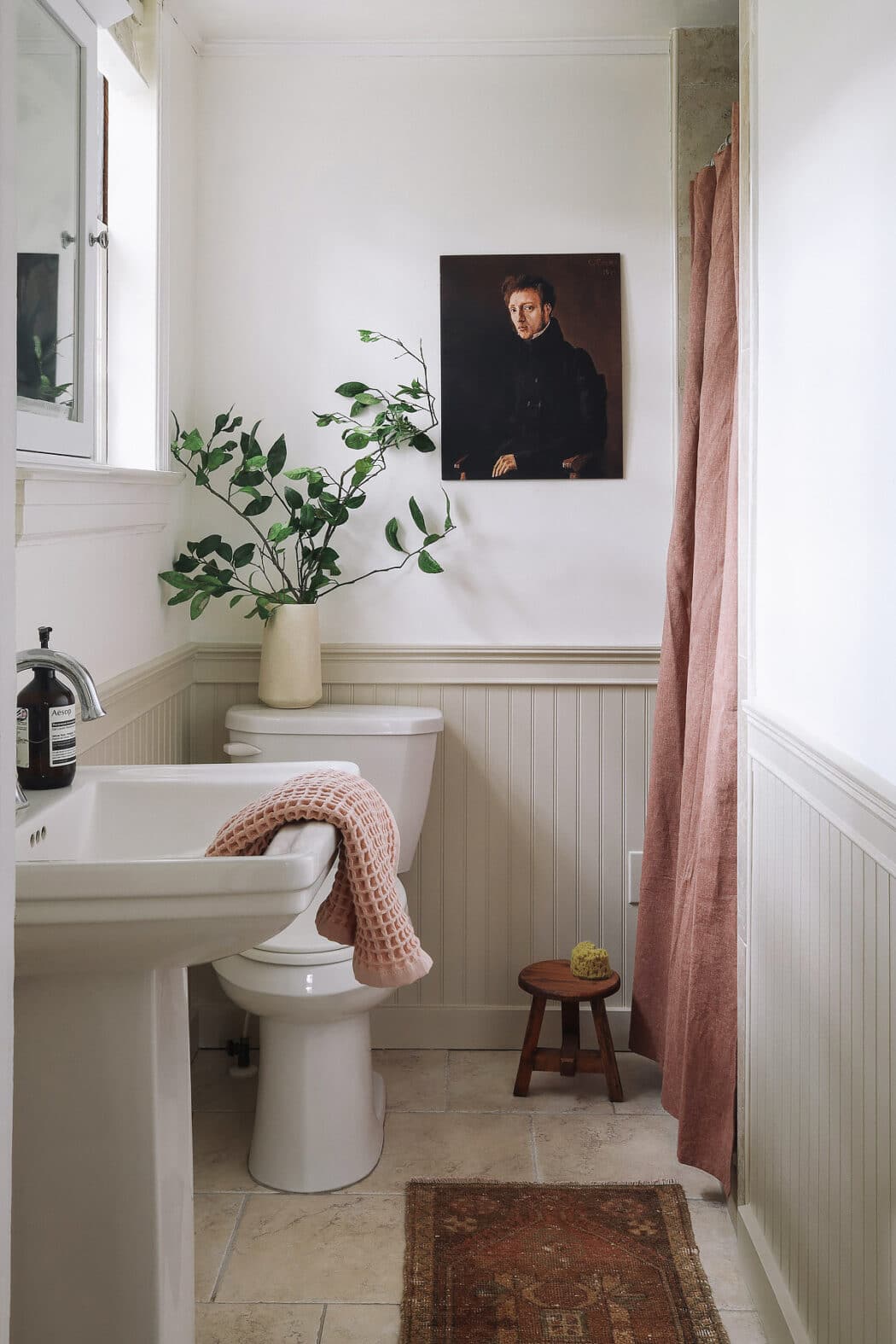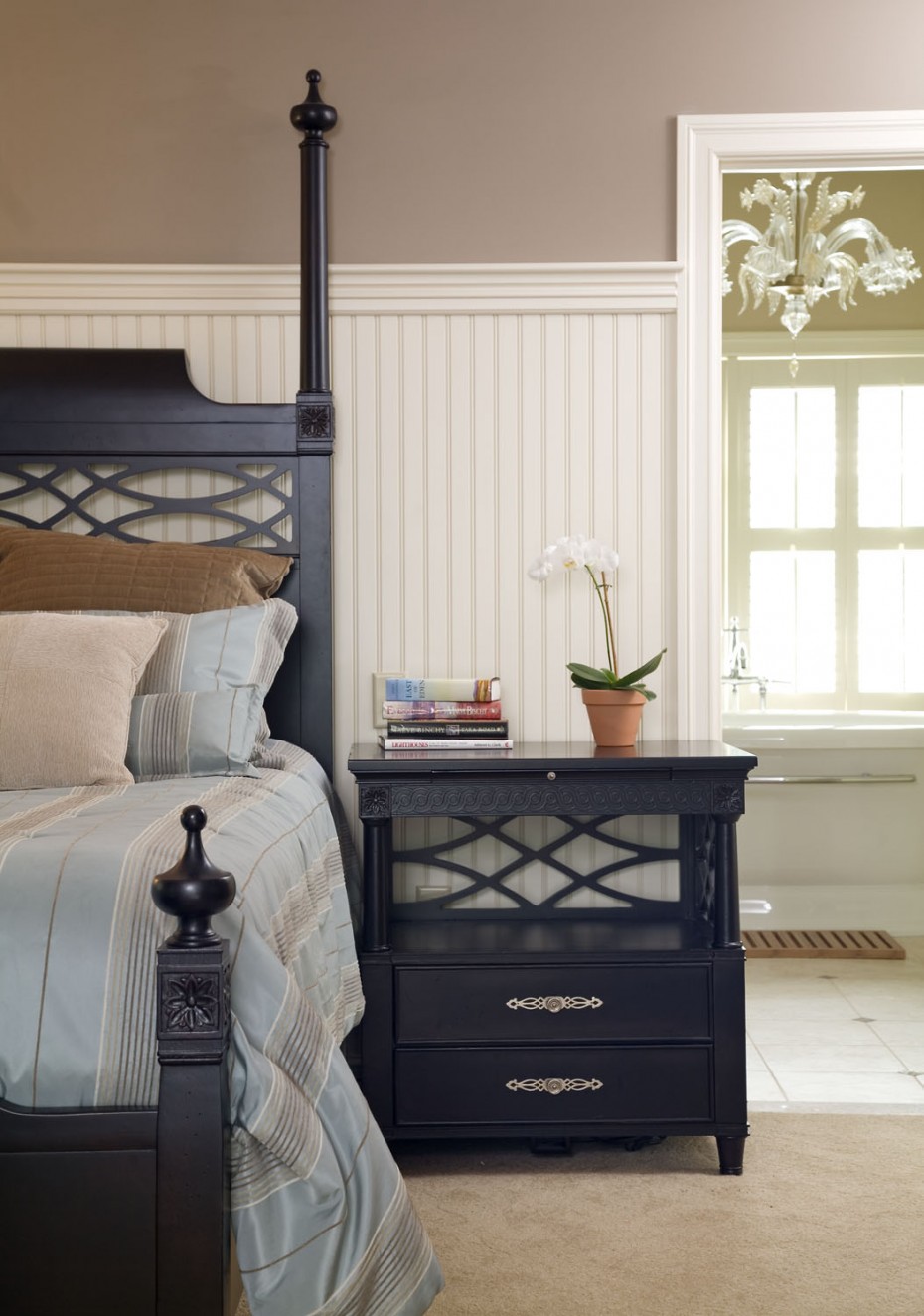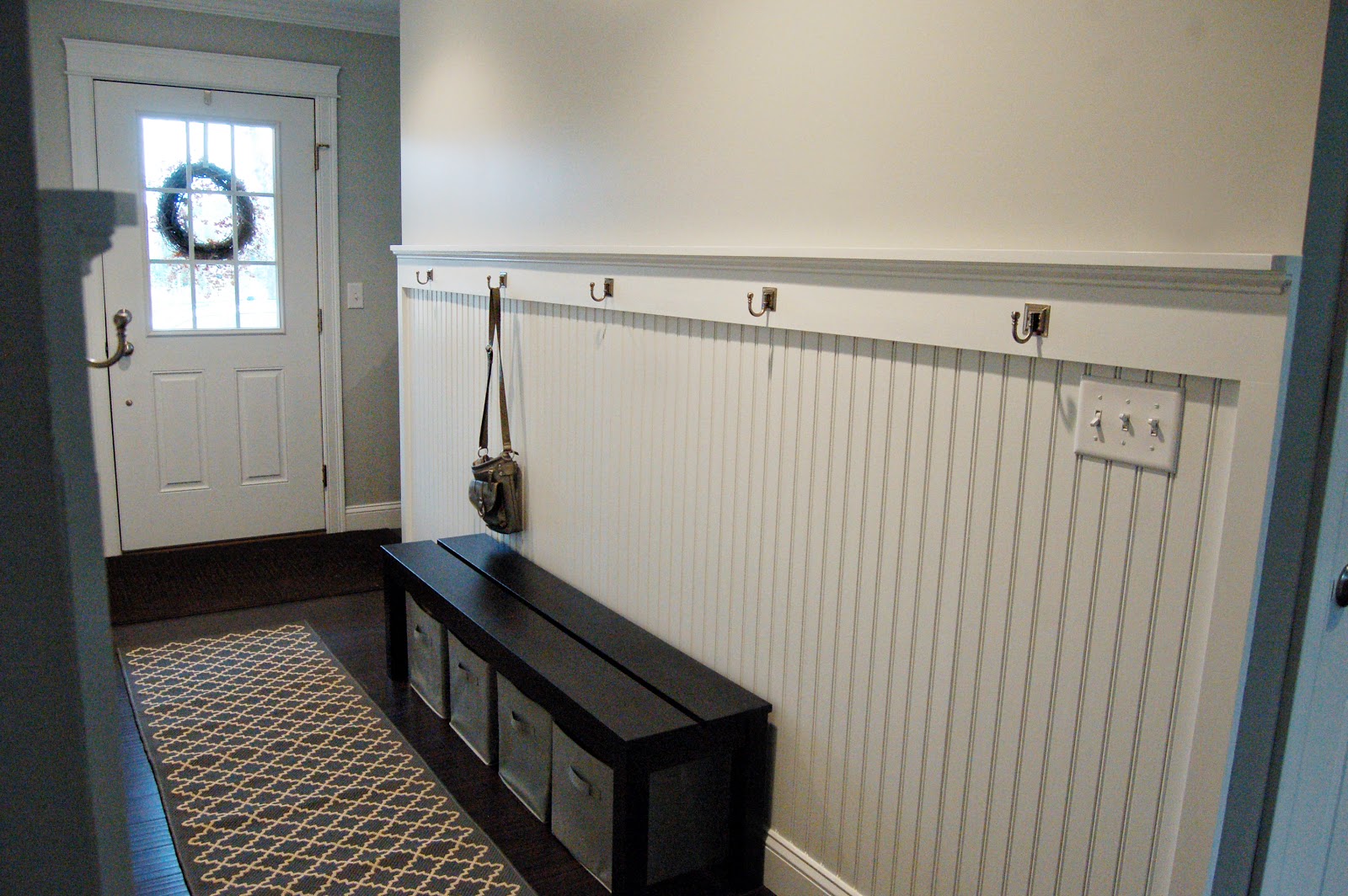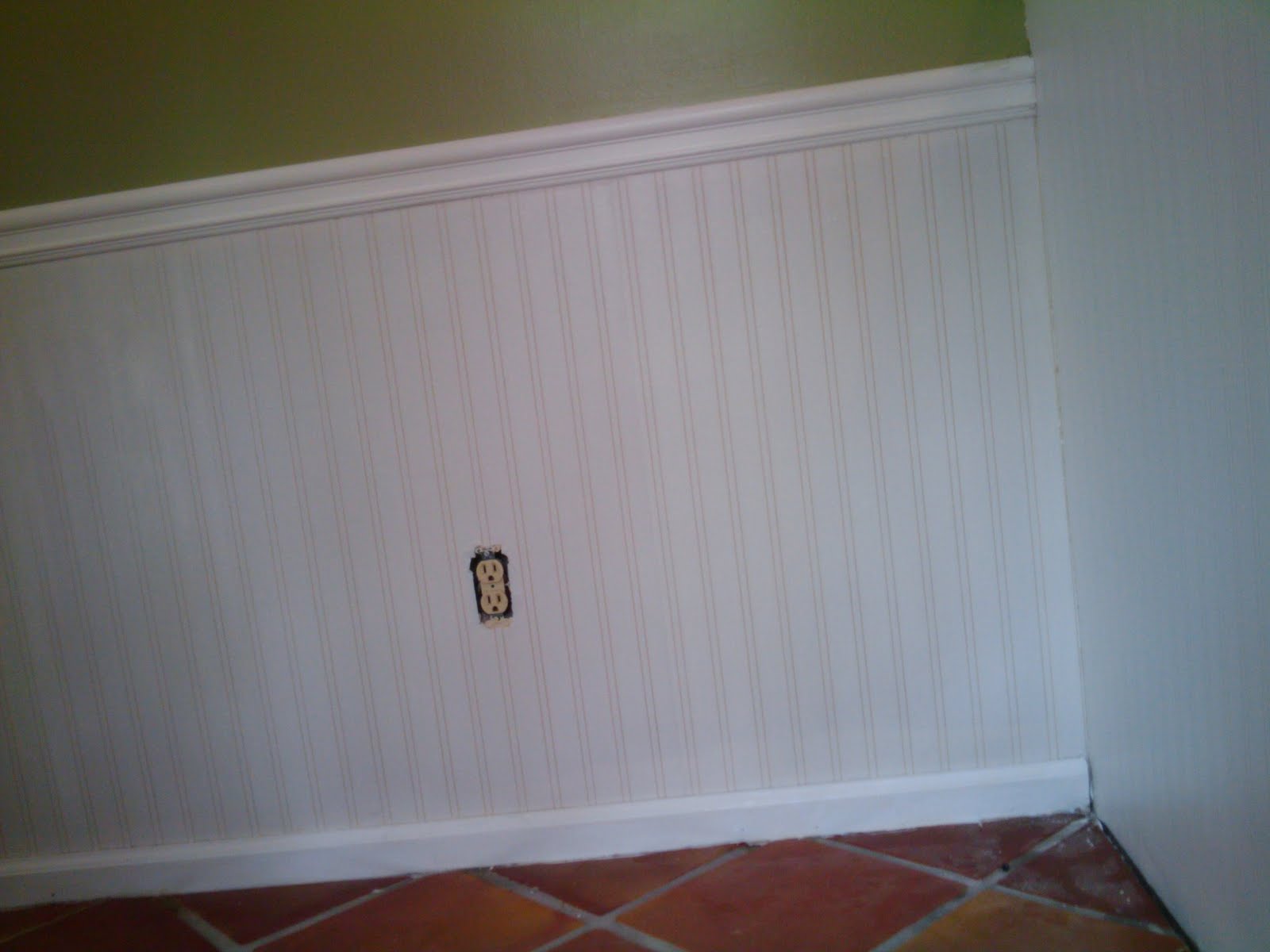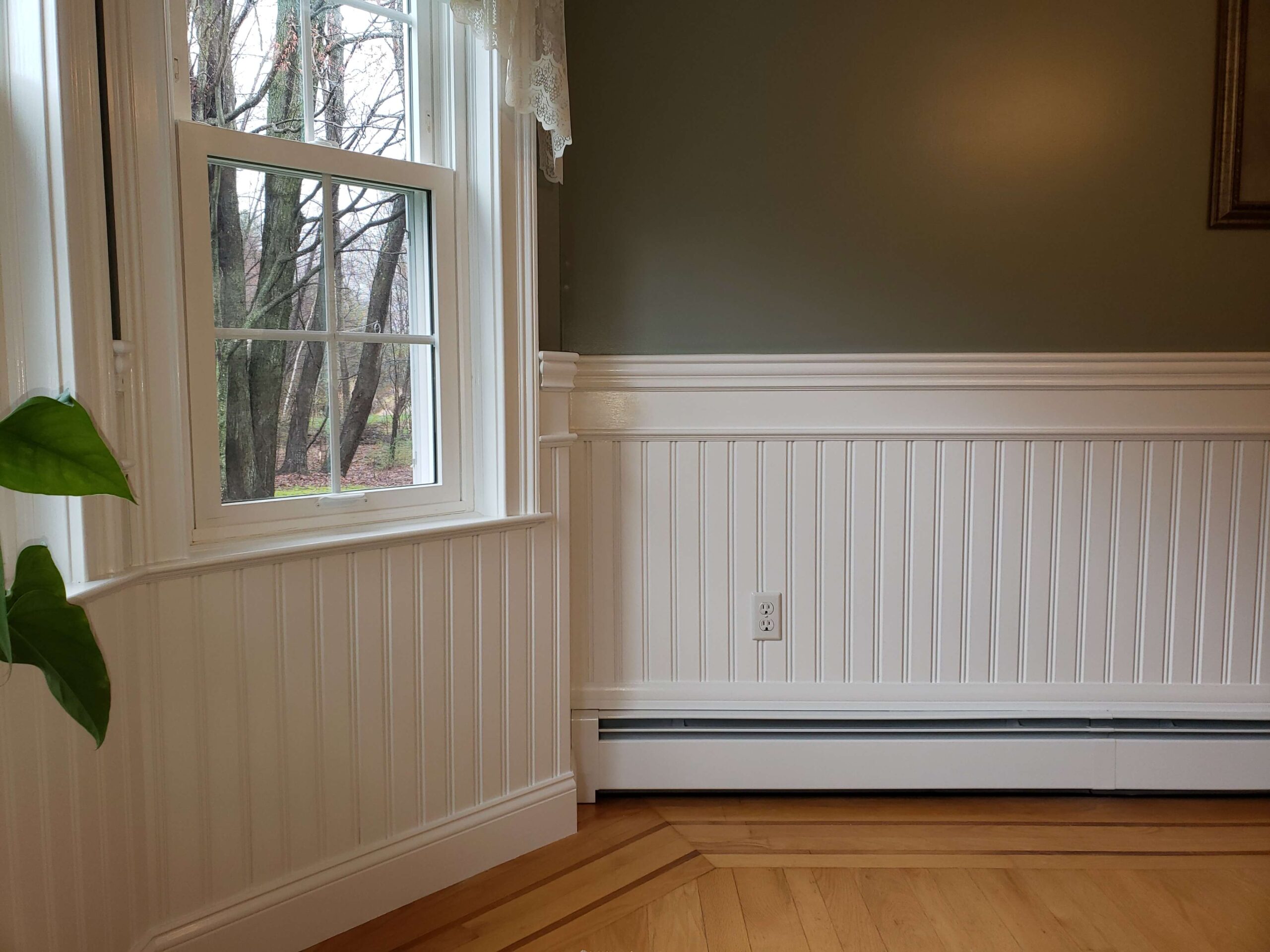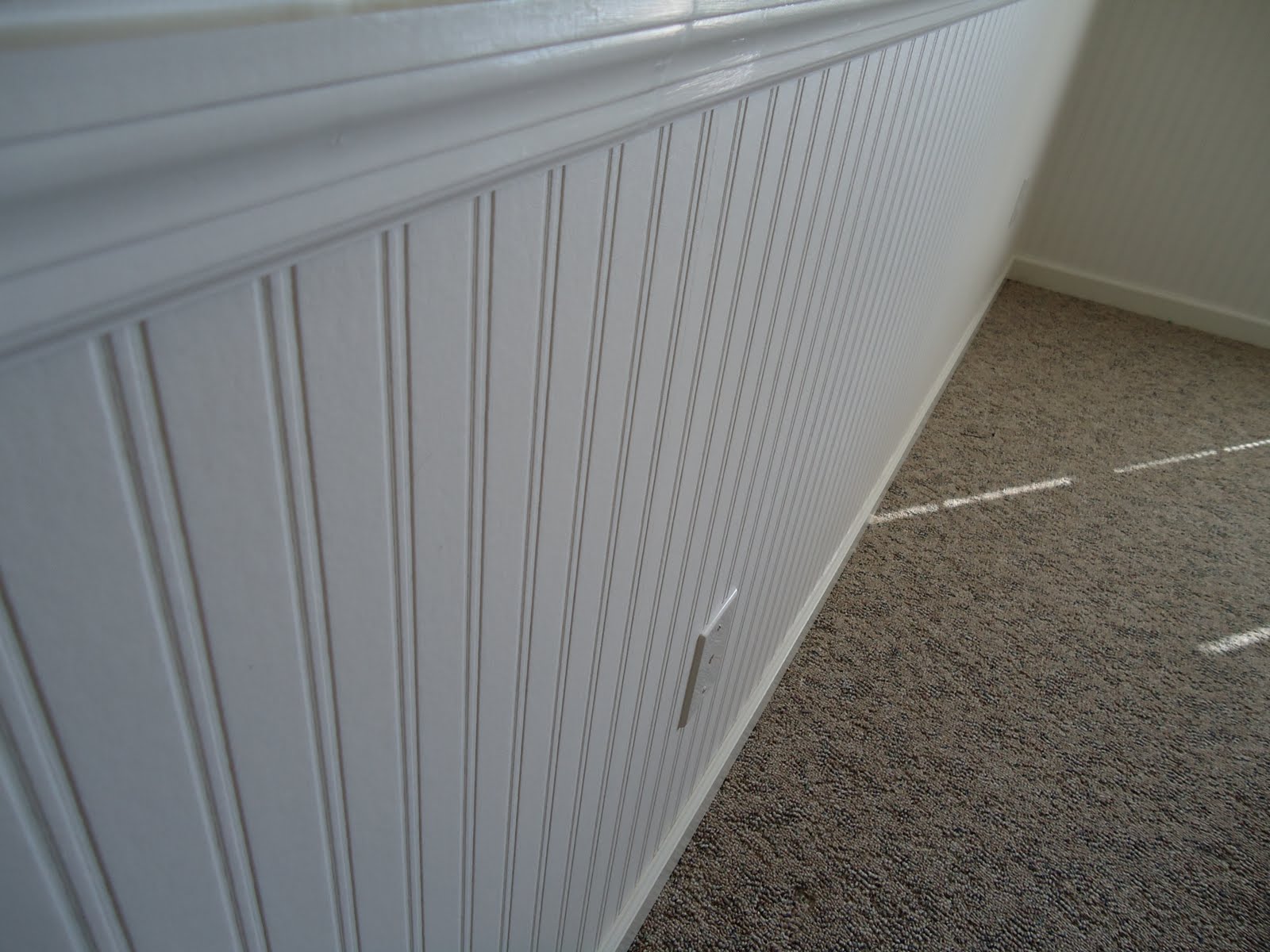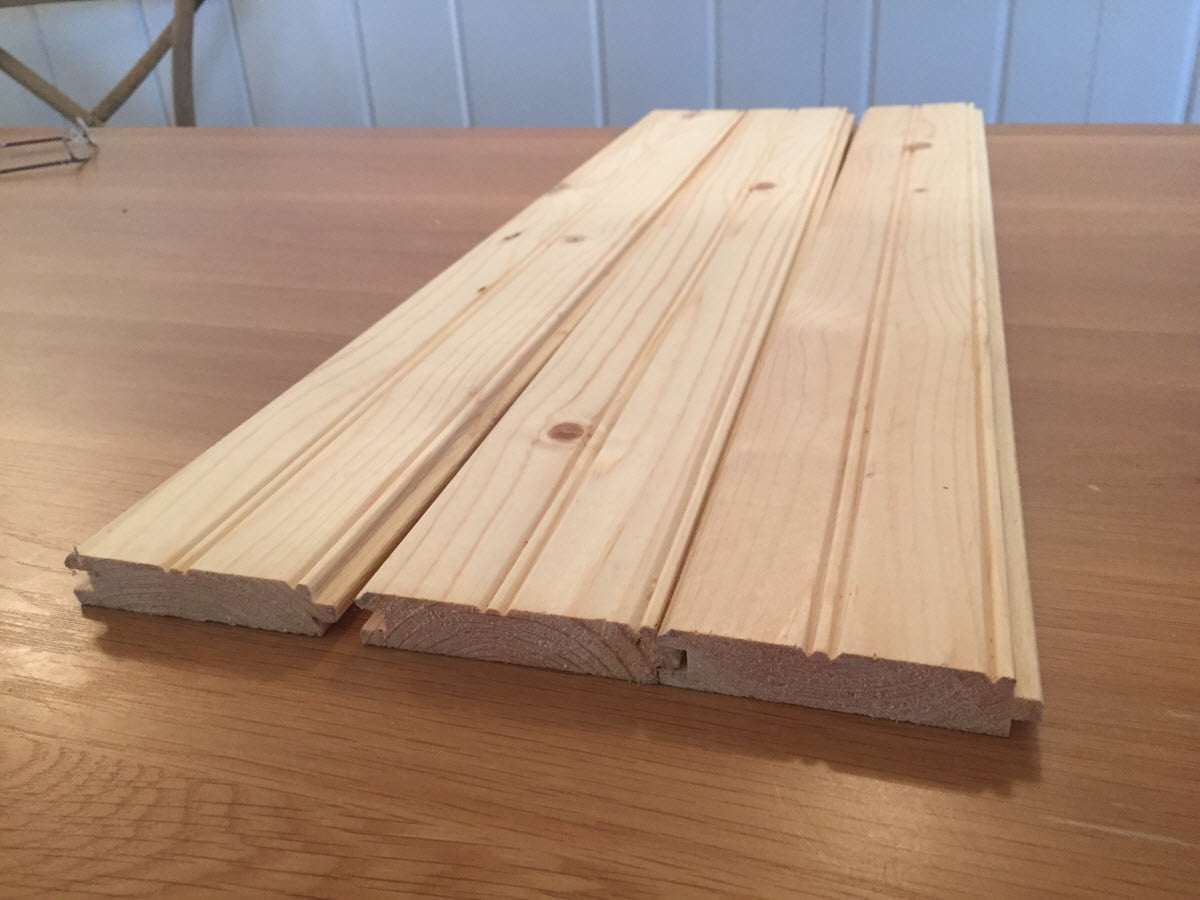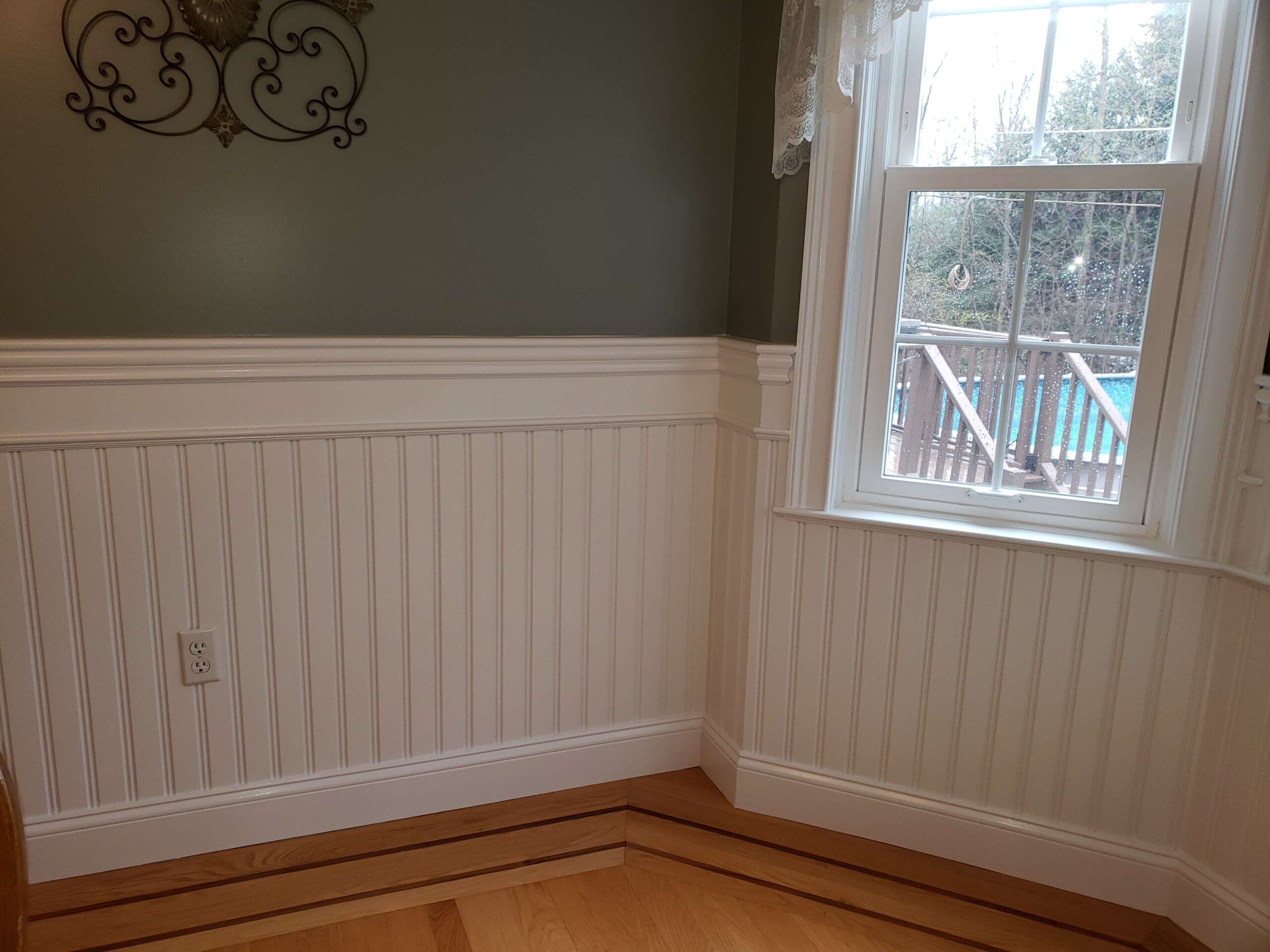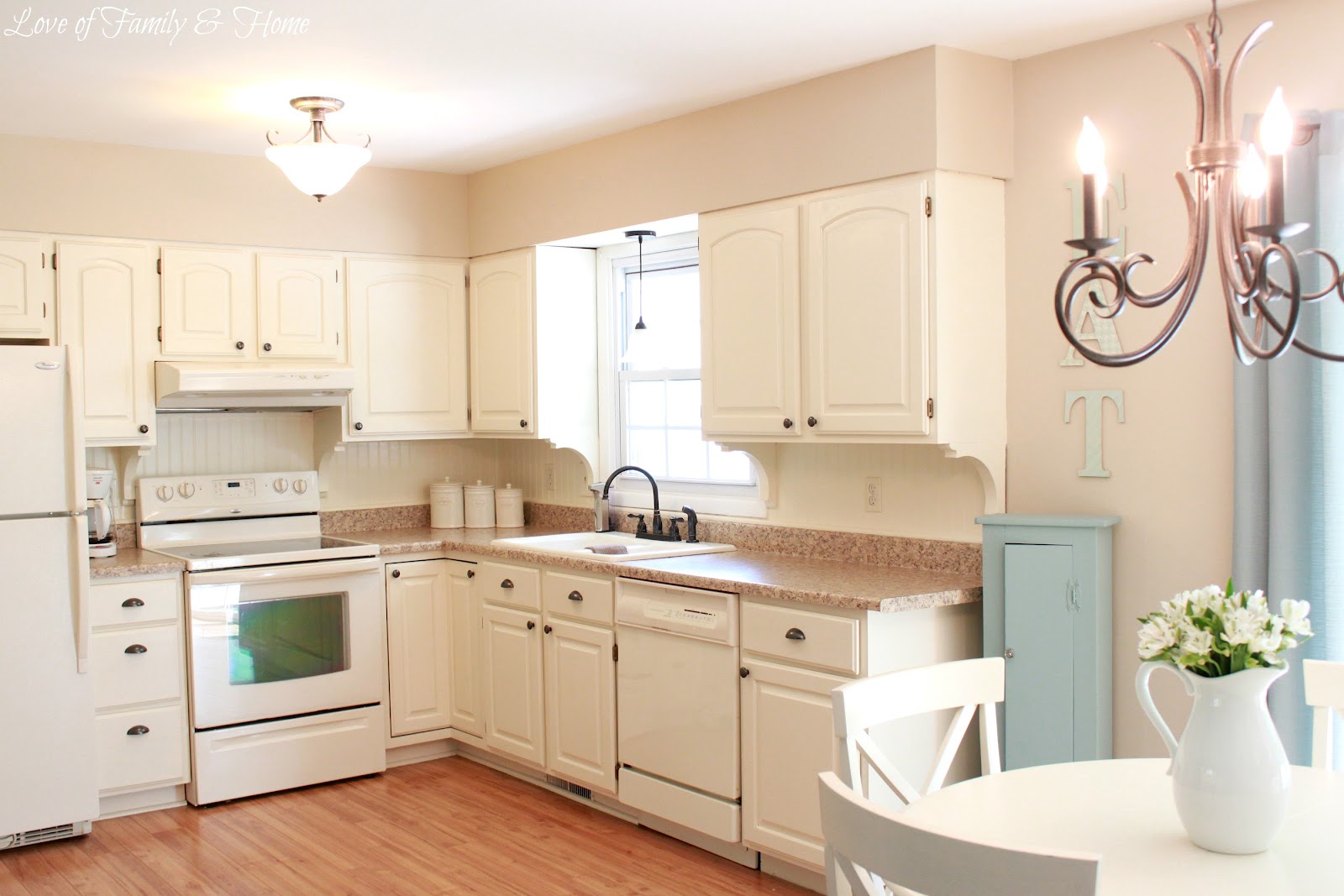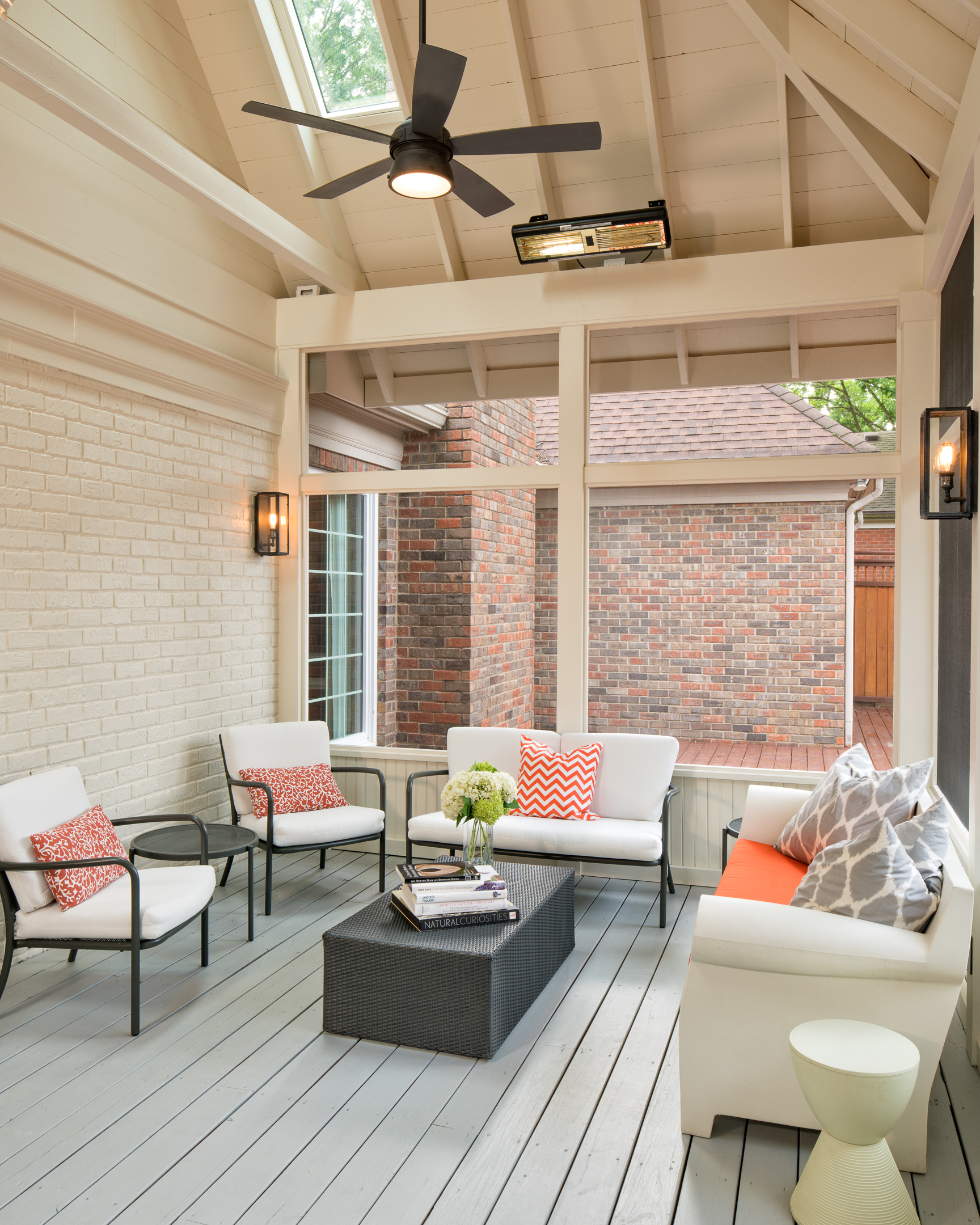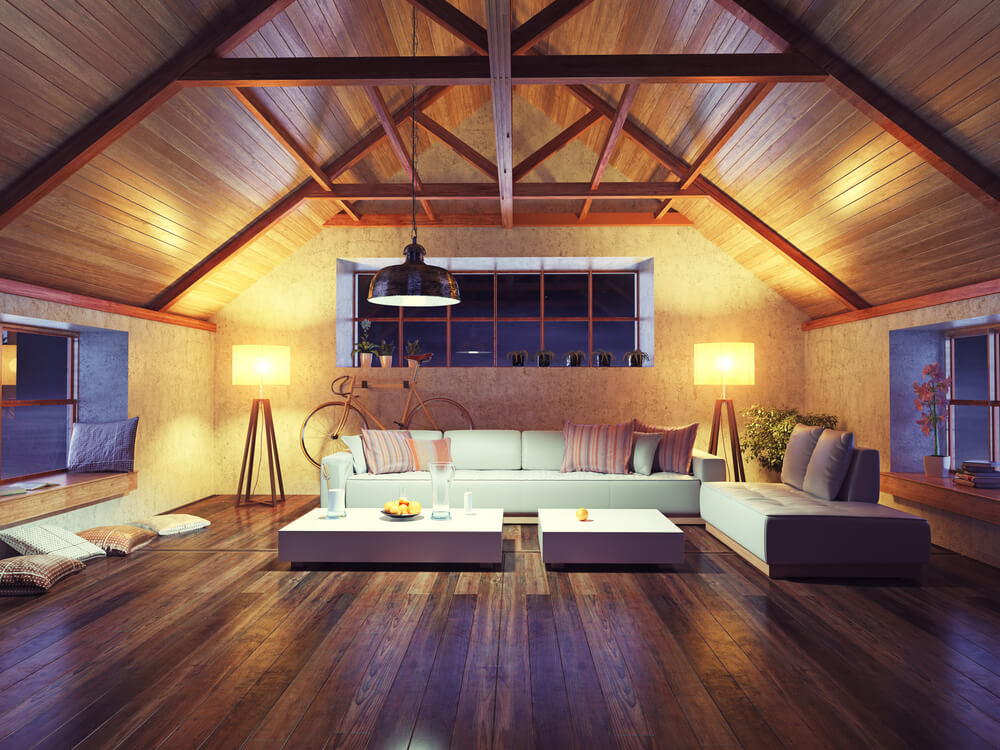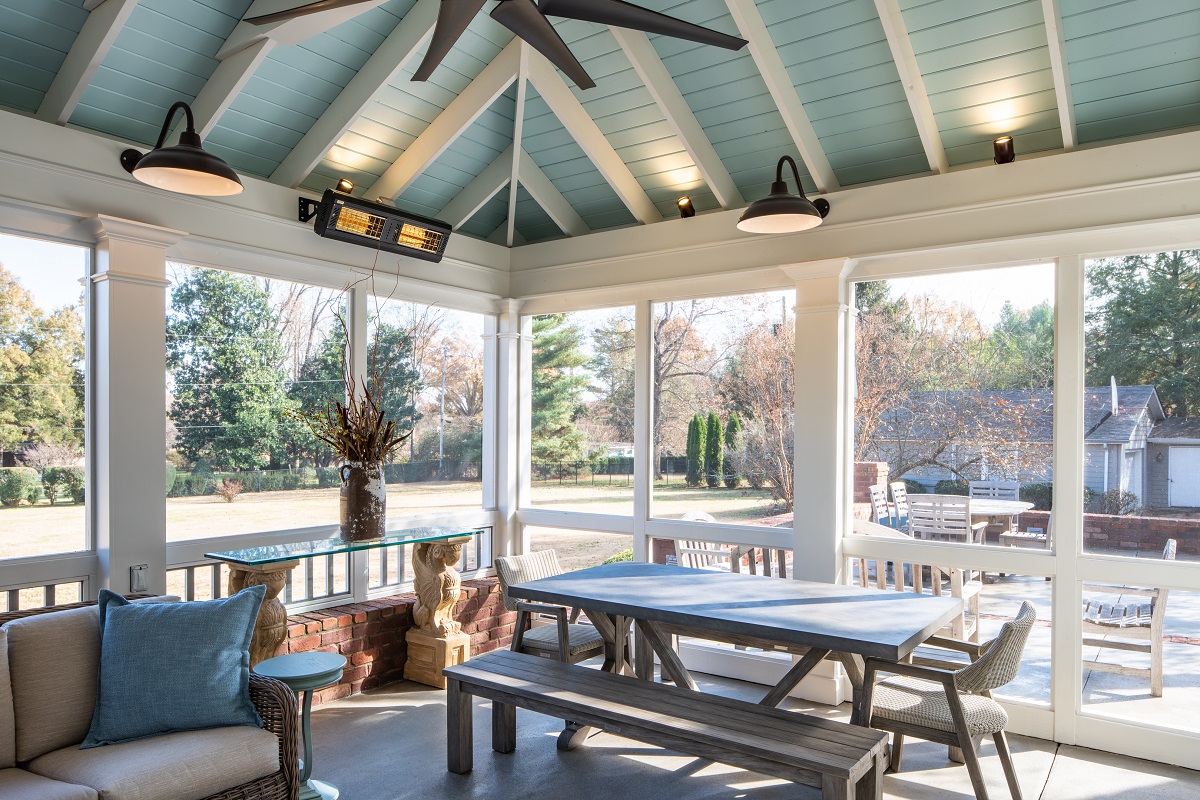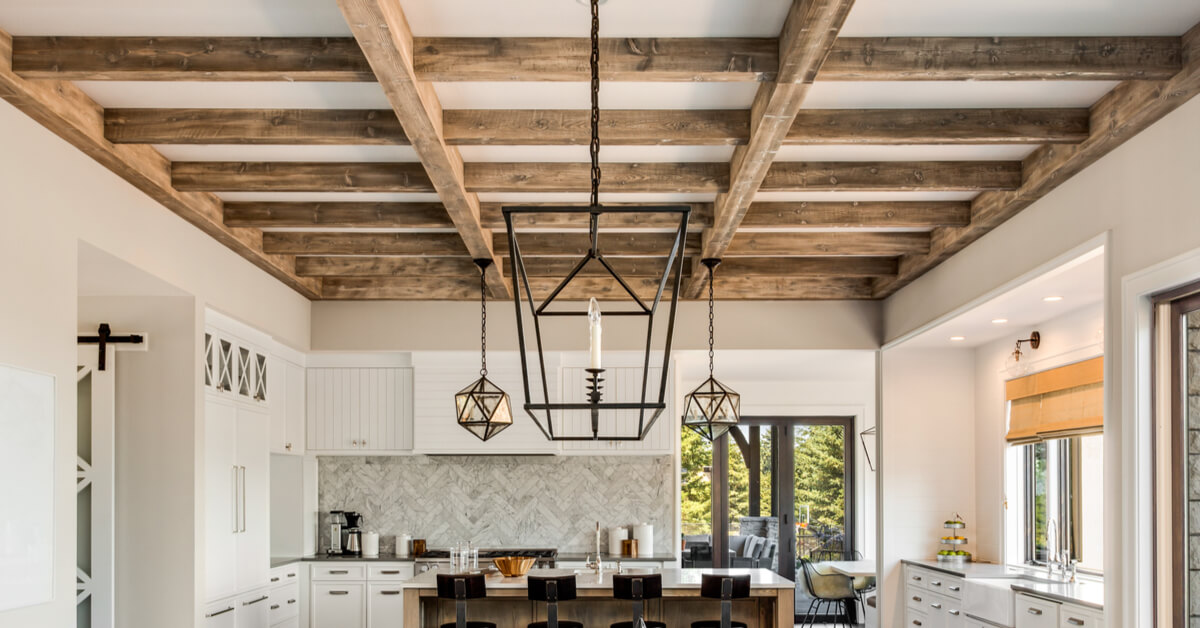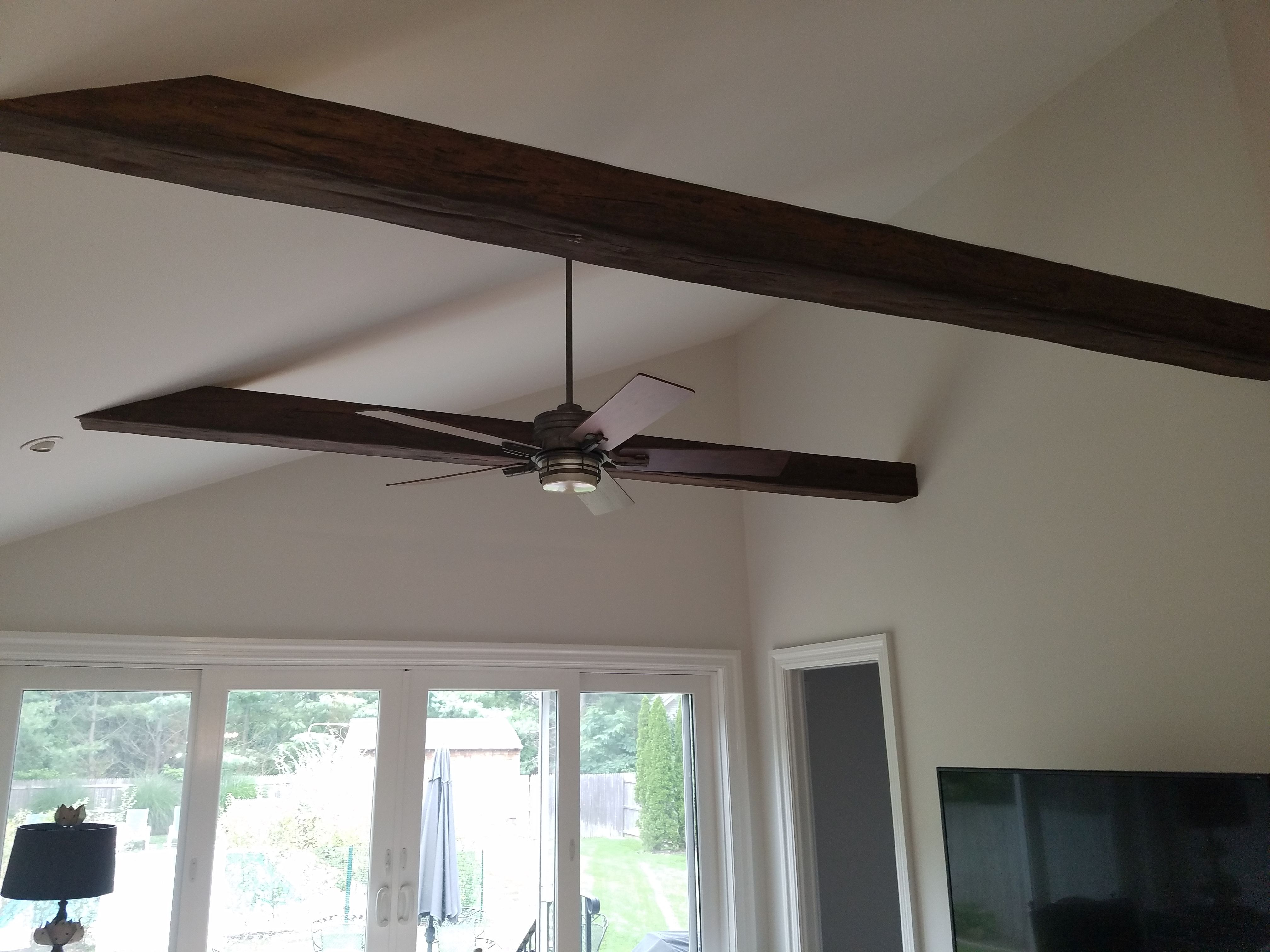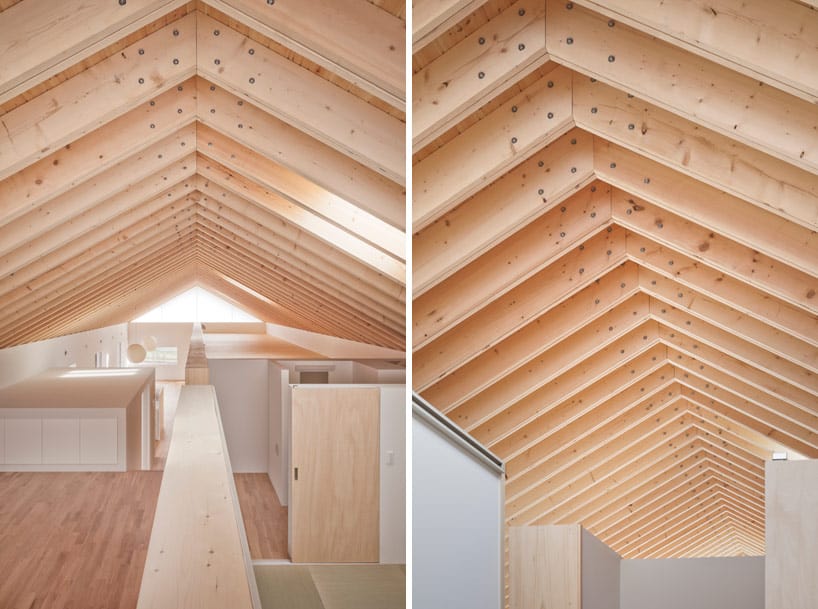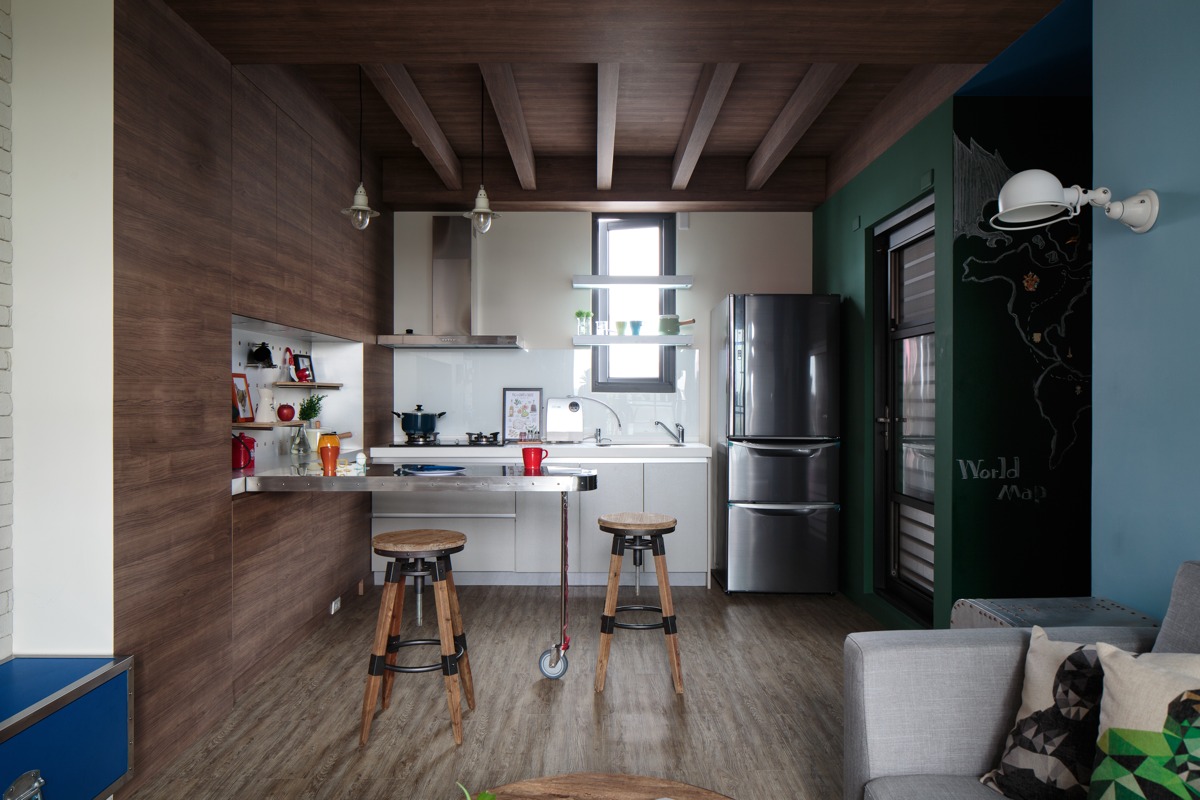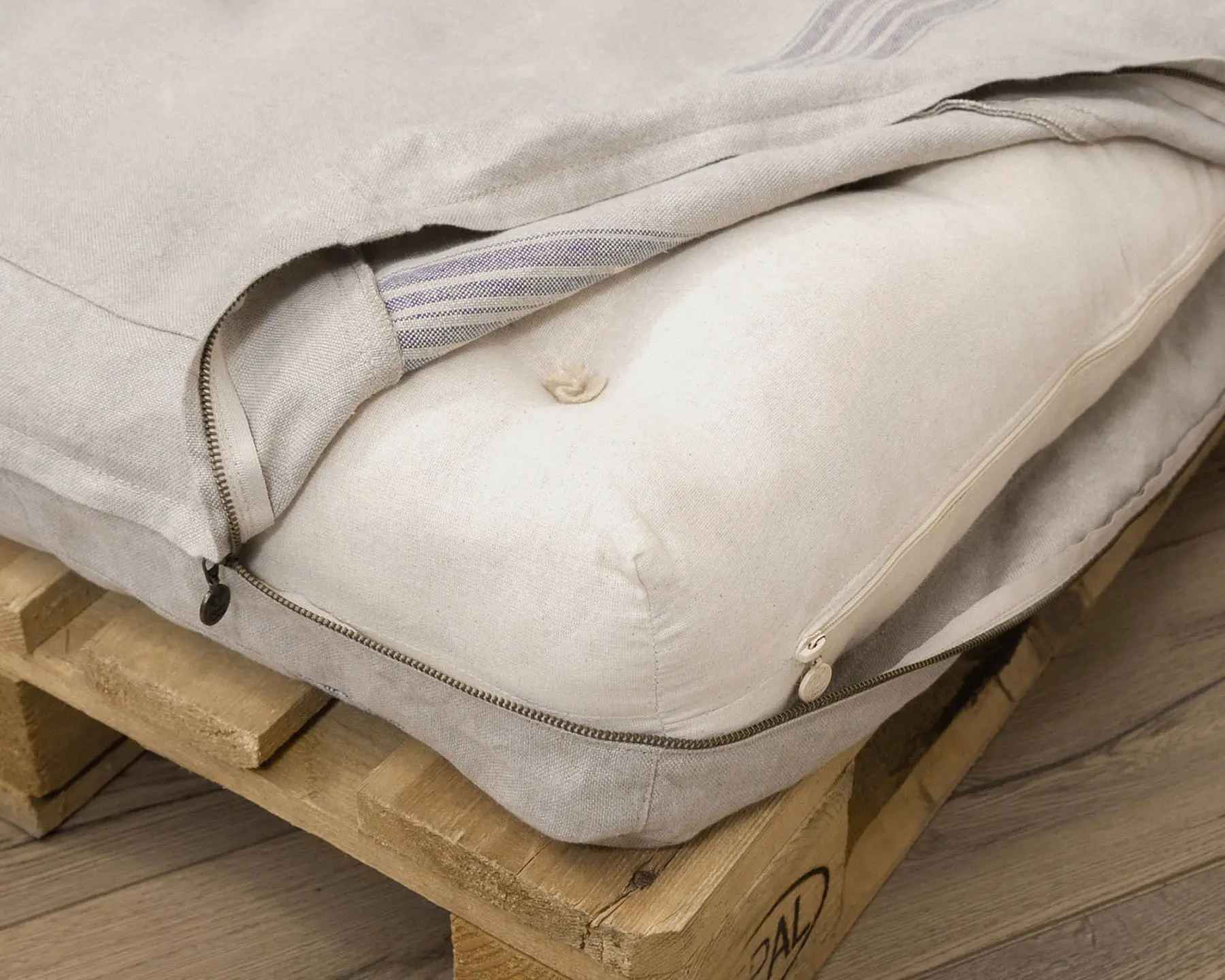Wooden beams are a classic and timeless ceiling treatment that adds warmth and character to any kitchen and dining room. These structural elements, whether exposed or faux, can be used to create a rustic, farmhouse look or add a touch of elegance to a more modern space. The natural texture and grain of wood can bring a sense of coziness and charm to the room.Wooden Beams
A coffered ceiling is a stunning and sophisticated option for kitchen and dining room ceilings. This type of treatment involves creating a grid pattern with recessed panels or beams, giving the illusion of a sunken ceiling. Coffered ceilings add depth, dimension, and architectural interest to a space, making it a popular choice for high-end homes. These ceilings can be painted in a contrasting color or left in their natural wood finish for a more traditional look.Coffered Ceiling
Tongue and groove ceilings are another popular option for kitchen and dining rooms. This type of ceiling treatment involves fitting together interlocking boards with a tongue on one side and a groove on the other. These boards can be made of different materials, such as wood, PVC, or composite, and can be stained or painted to match the overall design of the room. Tongue and groove ceilings create a seamless and cohesive look, adding a touch of elegance and texture to the space.Tongue and Groove
For a more industrial or urban feel, exposed brick is a great option for ceiling treatment in the kitchen and dining room. This type of treatment involves leaving the brick walls and ceiling exposed, adding a raw and rustic touch to the space. Exposed brick can also help absorb sound and provide insulation, making it a practical choice for these rooms. To add a pop of color and texture, the bricks can be painted or left in their natural state.Exposed Brick
Tray ceilings, also known as recessed ceilings, are a popular choice for adding depth and interest to a room. This type of ceiling treatment involves creating a raised section in the ceiling, usually in the shape of a tray, and can be further embellished with molding and lighting fixtures. Tray ceilings can make a room feel more spacious and elegant, and they are a great way to draw attention to a specific area, such as a dining table or kitchen island.Tray Ceiling
Shiplap ceilings have become increasingly popular in recent years, thanks to the rising popularity of farmhouse and coastal interior design styles. This type of treatment involves using long, horizontal boards with a gap between them, creating a charming and rustic look. Shiplap can be painted in a variety of colors or left in its natural wood finish, and it adds a cozy and welcoming feel to any kitchen and dining room.Shiplap
Vaulted ceilings are a beautiful and dramatic option for kitchen and dining rooms. This type of ceiling treatment involves creating a high, sloping ceiling, often with exposed beams, to create a spacious and airy feel. Vaulted ceilings can make a room feel grand and majestic, and they are a great choice for homes with a lot of natural light. These ceilings work well with a variety of design styles, from traditional to contemporary.Vaulted Ceiling
If you want to add a touch of vintage charm to your kitchen and dining room, faux tin tiles are a great option for ceiling treatment. These lightweight and easy-to-install tiles are made to look like traditional tin tiles, but without the high cost and maintenance. Faux tin tiles come in a variety of patterns and finishes, and they can be painted to match the color scheme of the room. These tiles are a great way to add texture and character to a space.Faux Tin Tiles
Beadboard is a type of paneling that features narrow, vertical planks with a ridge or "bead" in between each one. This type of ceiling treatment adds a charming and cottage-like feel to a kitchen and dining room. Beadboard can be painted in a variety of colors and can also be used on walls, creating a cohesive and cohesive look. This ceiling treatment is also a great option for adding texture and interest to a room with a low ceiling.Beadboard
For a more rustic and natural look, exposed rafters are a great option for ceiling treatment in the kitchen and dining room. This type of treatment involves leaving the structural beams and rafters exposed, creating a warm and cozy feel. Exposed rafters can be painted or stained to match the overall design of the room and can also be used to hang lighting fixtures or decorative items. This ceiling treatment adds a touch of character and charm to any space.Exposed Rafters
The Importance of Ceiling Treatment for Kitchen and Dining Room
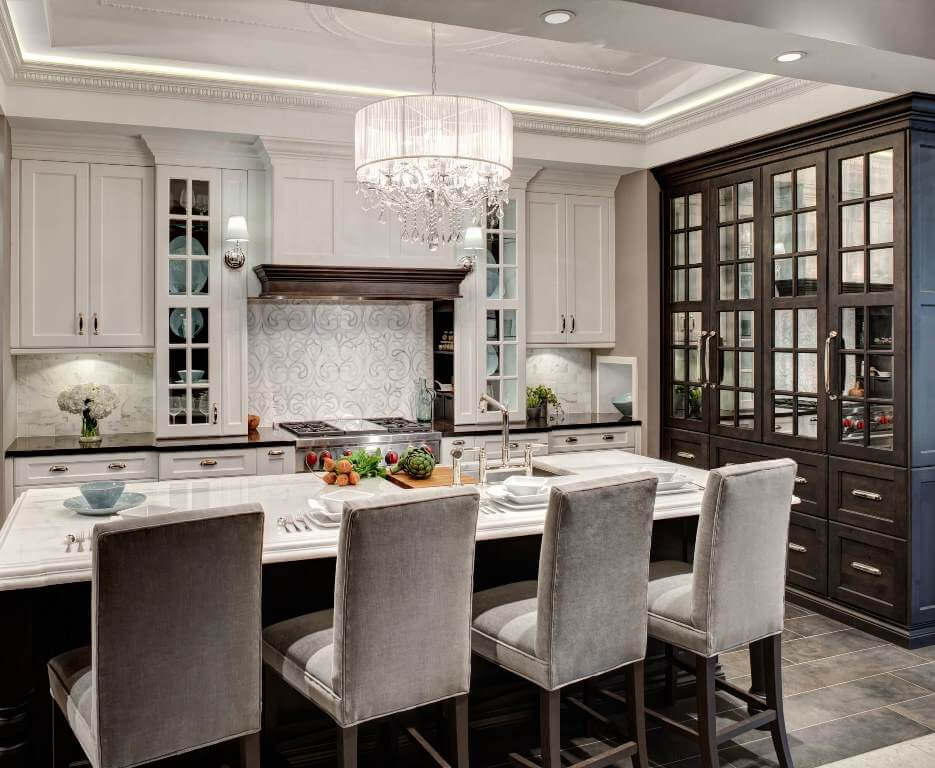
Enhancing Aesthetics and Ambience
 When designing our homes, we often pay attention to the walls, flooring, and furniture, but one area that is often overlooked is the ceiling. However, incorporating a ceiling treatment in our kitchen and dining room can greatly enhance the overall aesthetics and ambience of these spaces. By adding texture, color, and dimension to the ceiling, we can create a more visually appealing and inviting environment to cook and dine in.
Kitchen and dining room ceilings
are often plain and white, but with the right treatment, they can become a focal point of the room. Adding a
statement ceiling
can transform the space and make it more interesting and unique. For example, a
coffered ceiling
adds a touch of elegance and sophistication, while a
wooden beam ceiling
creates a warm and rustic feel. These treatments not only add visual interest but can also make the room feel more spacious and open.
When designing our homes, we often pay attention to the walls, flooring, and furniture, but one area that is often overlooked is the ceiling. However, incorporating a ceiling treatment in our kitchen and dining room can greatly enhance the overall aesthetics and ambience of these spaces. By adding texture, color, and dimension to the ceiling, we can create a more visually appealing and inviting environment to cook and dine in.
Kitchen and dining room ceilings
are often plain and white, but with the right treatment, they can become a focal point of the room. Adding a
statement ceiling
can transform the space and make it more interesting and unique. For example, a
coffered ceiling
adds a touch of elegance and sophistication, while a
wooden beam ceiling
creates a warm and rustic feel. These treatments not only add visual interest but can also make the room feel more spacious and open.
Improving Acoustics and Lighting
 Another benefit of incorporating a ceiling treatment in the kitchen and dining room is the improvement of acoustics and lighting. With the rise of open floor plans, sound can easily travel from one room to another. By adding acoustic panels or
acoustic tiles
to the ceiling, we can reduce noise and create a more peaceful environment for cooking and dining.
Ceiling treatments can also help with lighting in the kitchen and dining room. By adding
recessed lighting
to a coffered ceiling, we can create a soft and warm glow that is perfect for dining. Or, by installing a
chandelier
in the center of a tray ceiling, we can add a touch of glamour and create a focal point for the room.
Another benefit of incorporating a ceiling treatment in the kitchen and dining room is the improvement of acoustics and lighting. With the rise of open floor plans, sound can easily travel from one room to another. By adding acoustic panels or
acoustic tiles
to the ceiling, we can reduce noise and create a more peaceful environment for cooking and dining.
Ceiling treatments can also help with lighting in the kitchen and dining room. By adding
recessed lighting
to a coffered ceiling, we can create a soft and warm glow that is perfect for dining. Or, by installing a
chandelier
in the center of a tray ceiling, we can add a touch of glamour and create a focal point for the room.
Concealing Imperfections
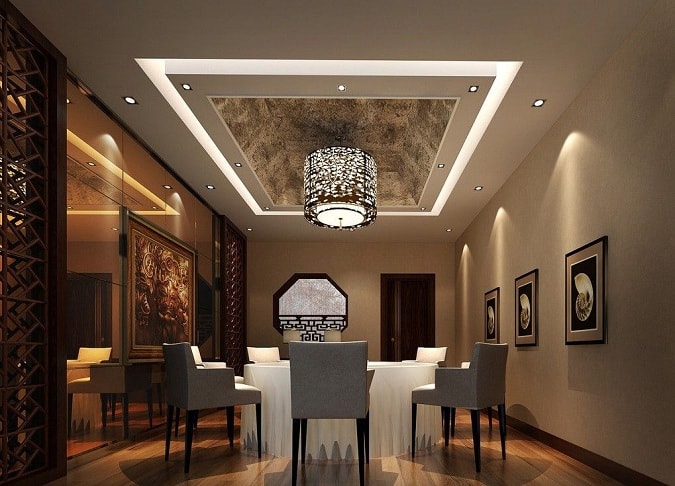 In older homes, the ceiling can often show signs of wear and tear, such as cracks, stains, or uneven surfaces. By incorporating a ceiling treatment, we can easily
conceal imperfections
and give the room a fresh and updated look. For example, a
drop ceiling
can cover up any unsightly pipes or wiring, while a
stamped tin ceiling
can add character and charm to the space.
In conclusion, ceiling treatment is an important aspect to consider when designing our kitchen and dining room. From improving aesthetics and ambience to enhancing acoustics and lighting, it can greatly impact the overall look and feel of these spaces. So, next time you are planning a home renovation, don't forget to give your kitchen and dining room ceilings some love and attention.
In older homes, the ceiling can often show signs of wear and tear, such as cracks, stains, or uneven surfaces. By incorporating a ceiling treatment, we can easily
conceal imperfections
and give the room a fresh and updated look. For example, a
drop ceiling
can cover up any unsightly pipes or wiring, while a
stamped tin ceiling
can add character and charm to the space.
In conclusion, ceiling treatment is an important aspect to consider when designing our kitchen and dining room. From improving aesthetics and ambience to enhancing acoustics and lighting, it can greatly impact the overall look and feel of these spaces. So, next time you are planning a home renovation, don't forget to give your kitchen and dining room ceilings some love and attention.
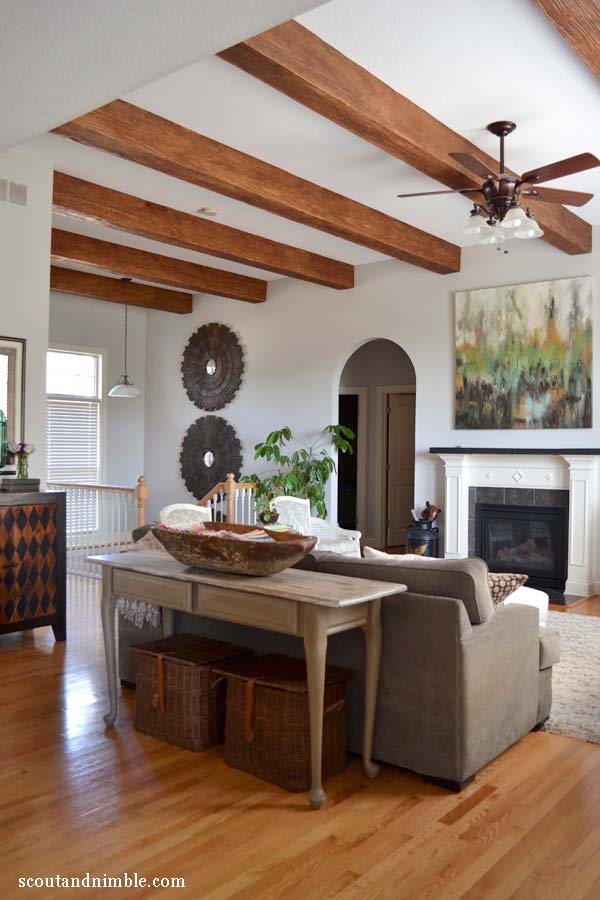


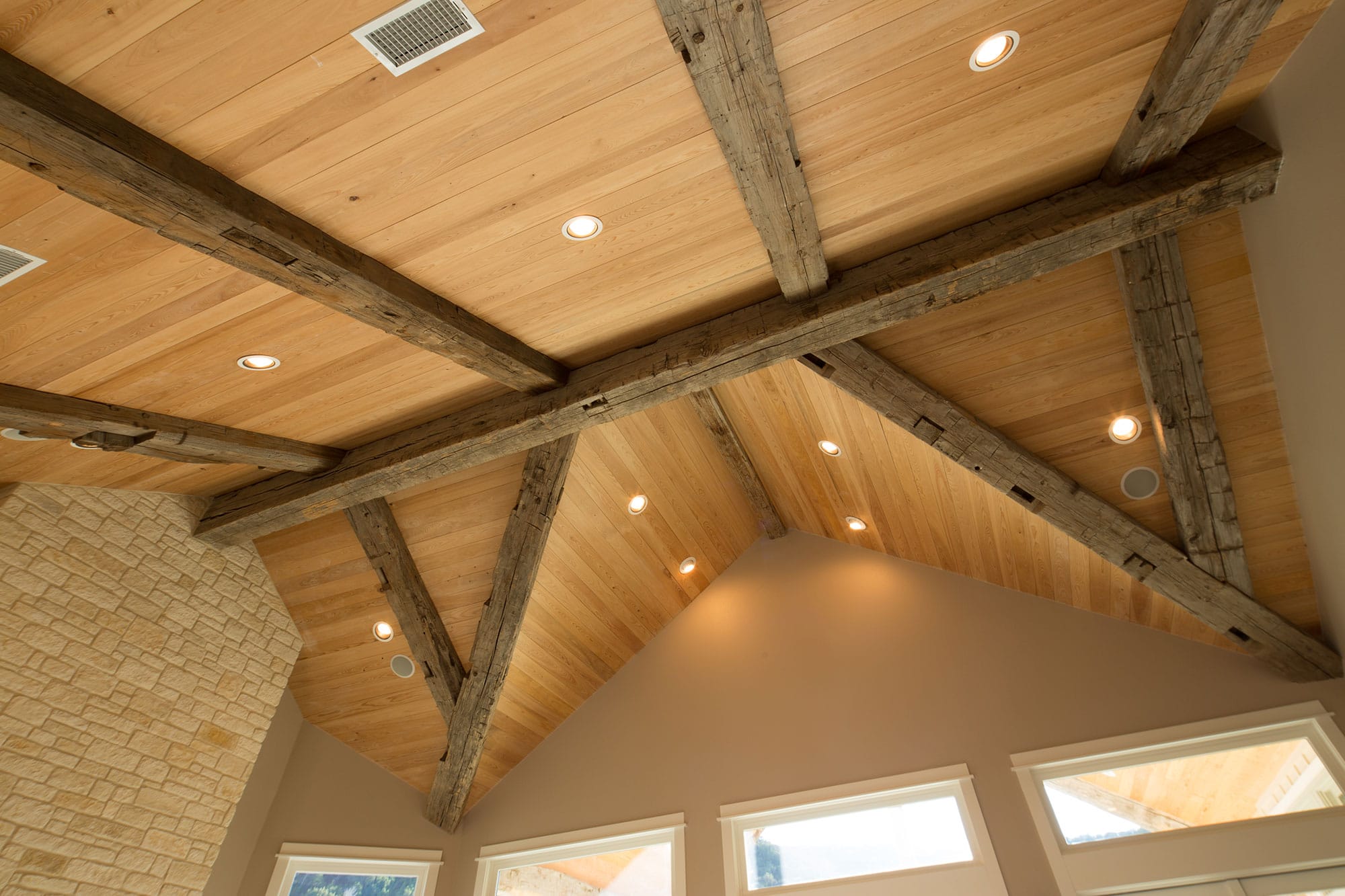
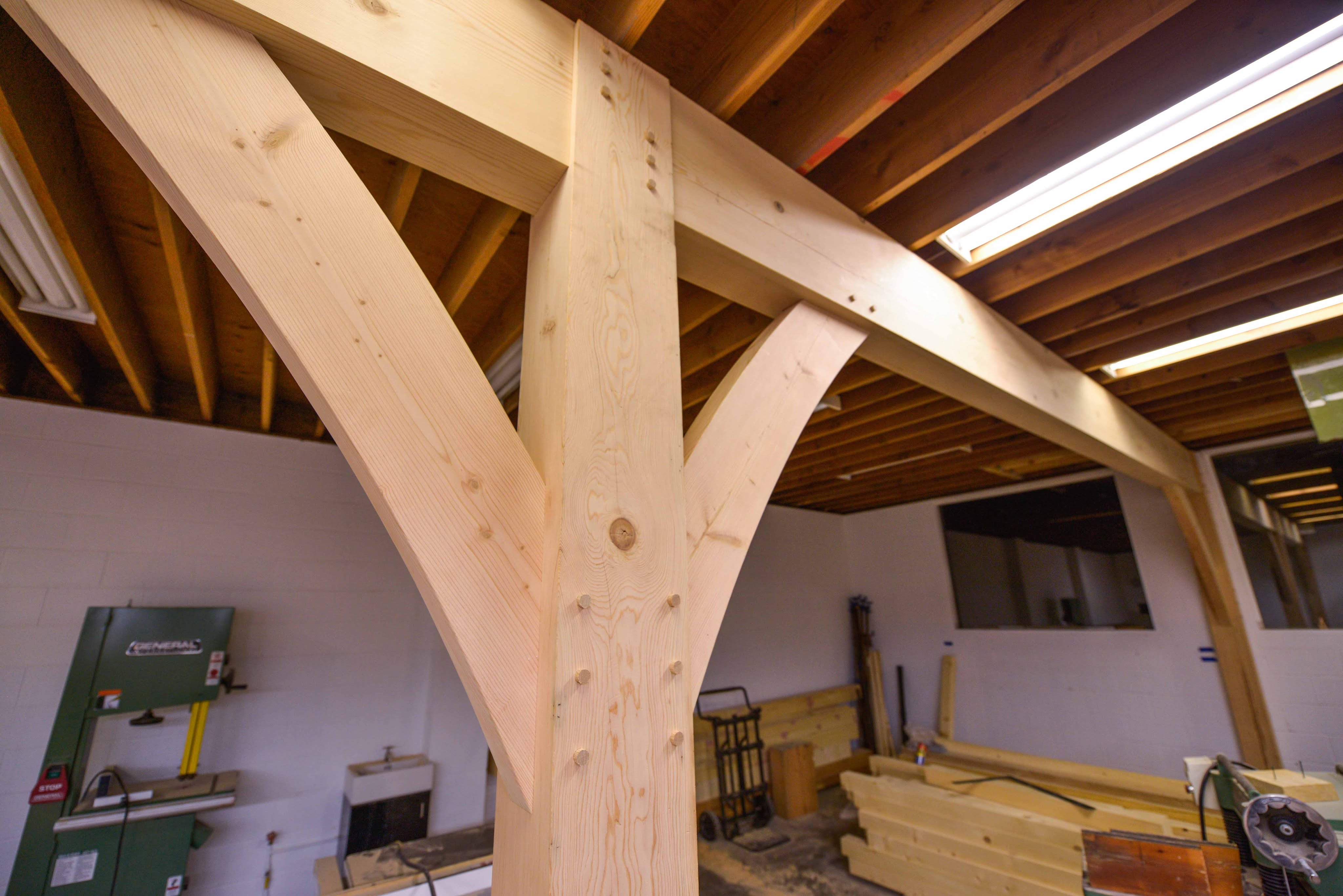

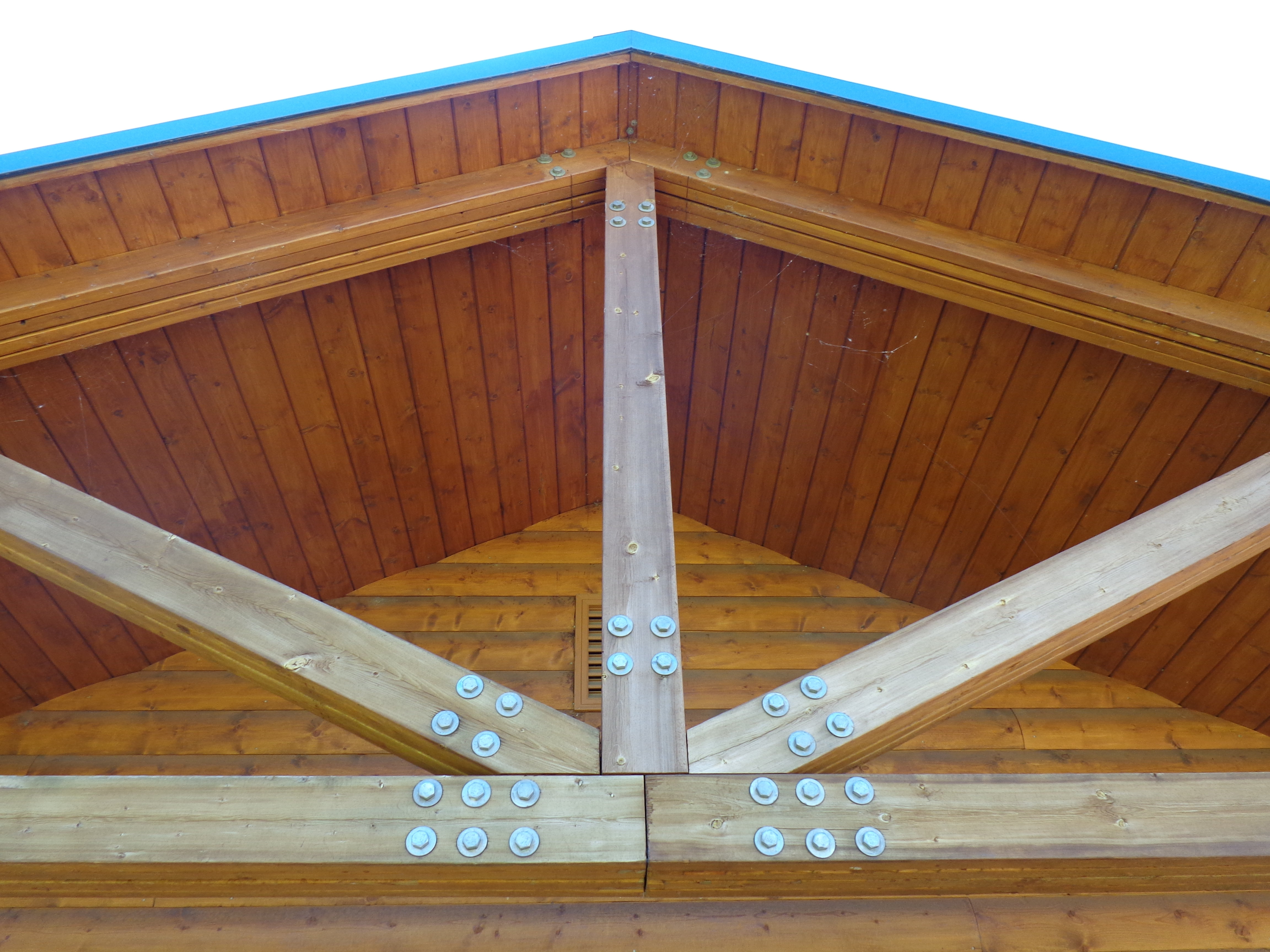
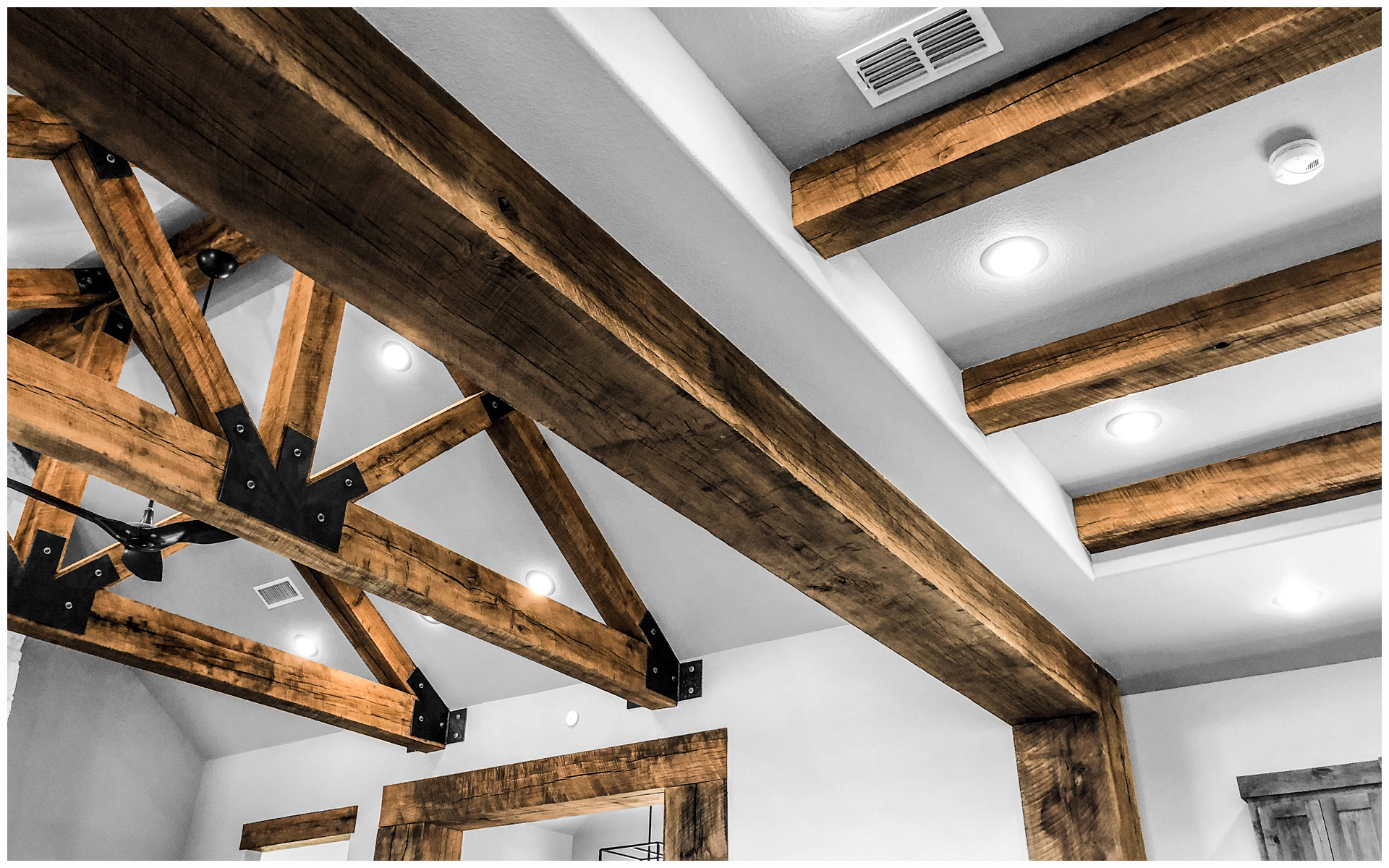
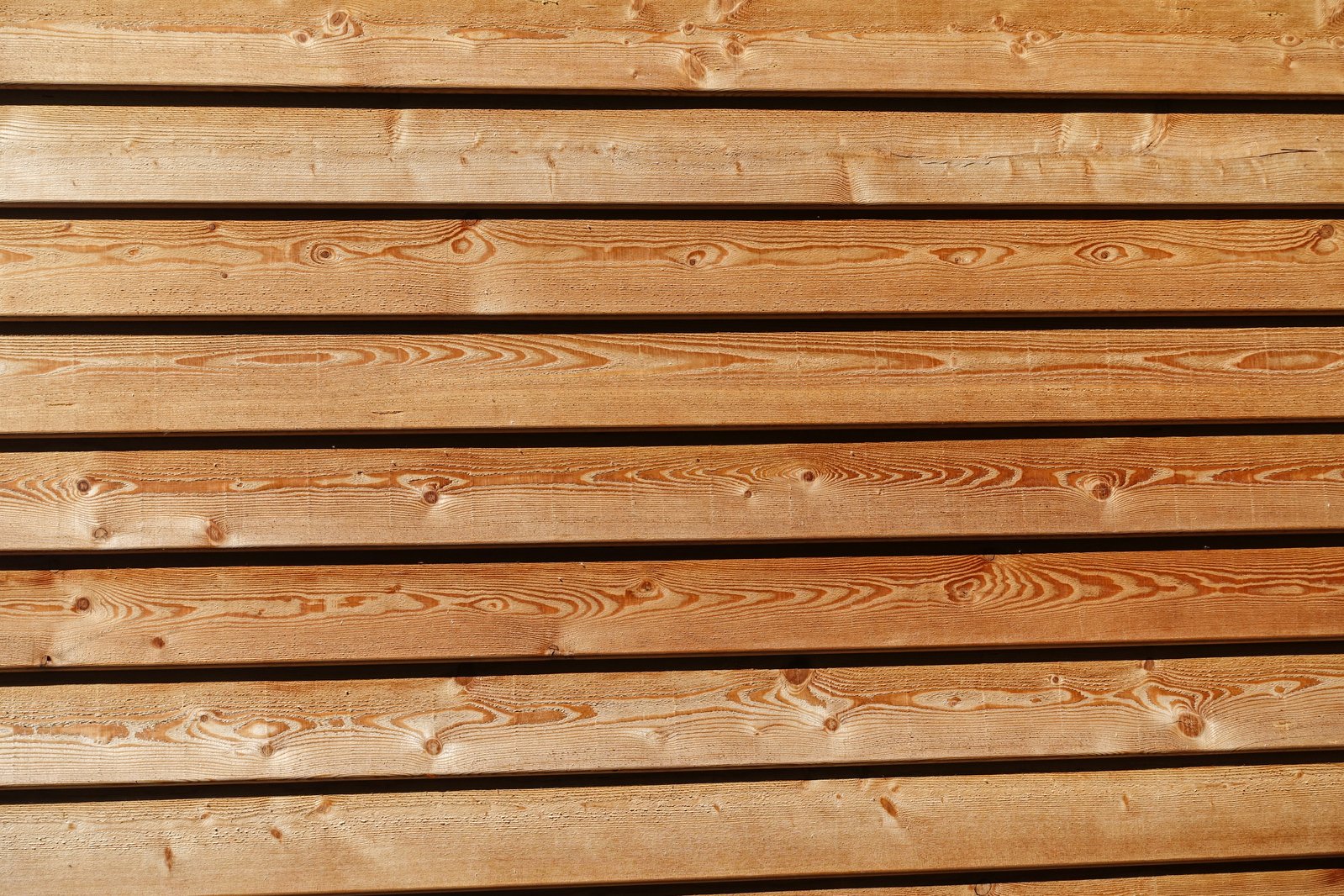


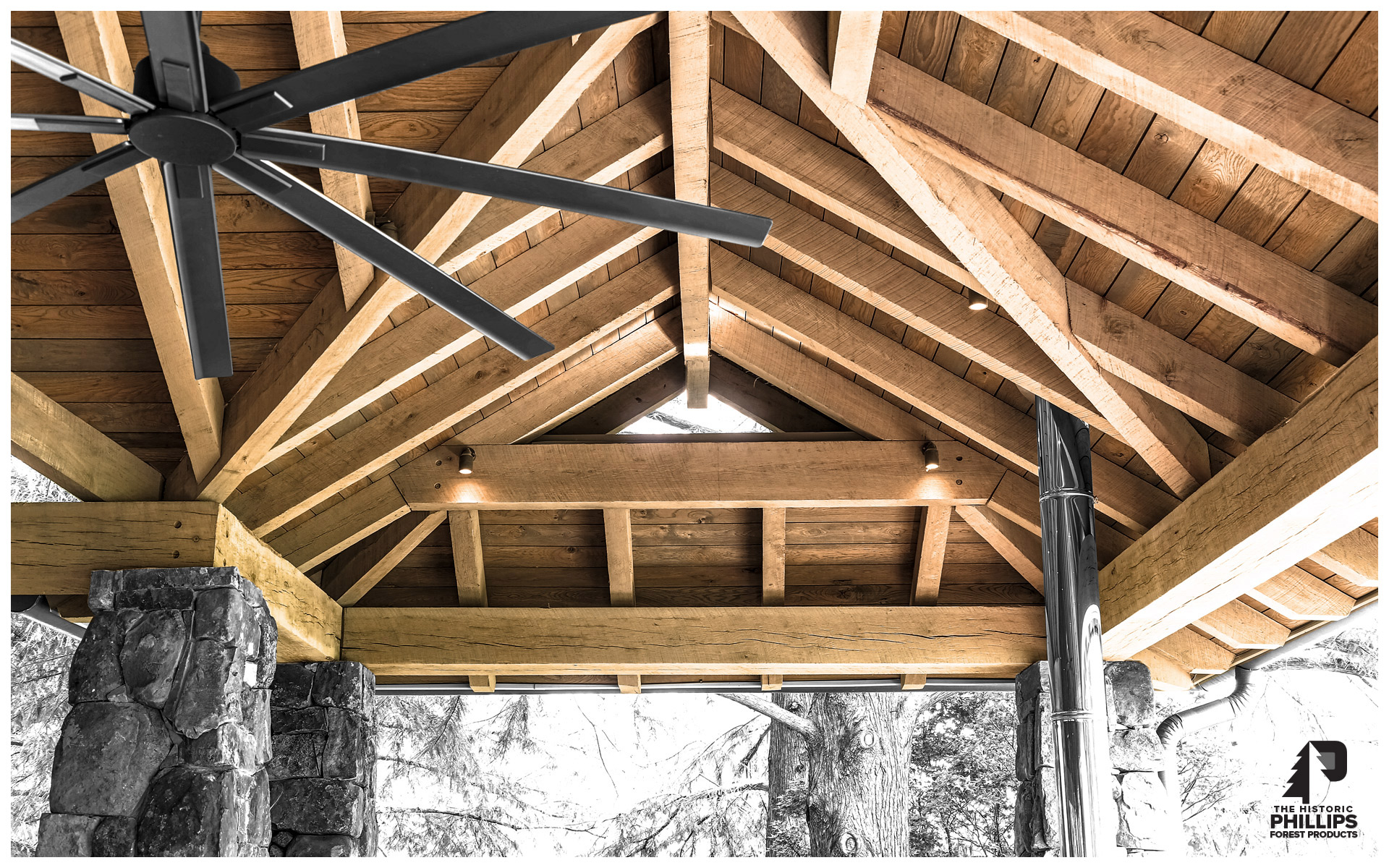



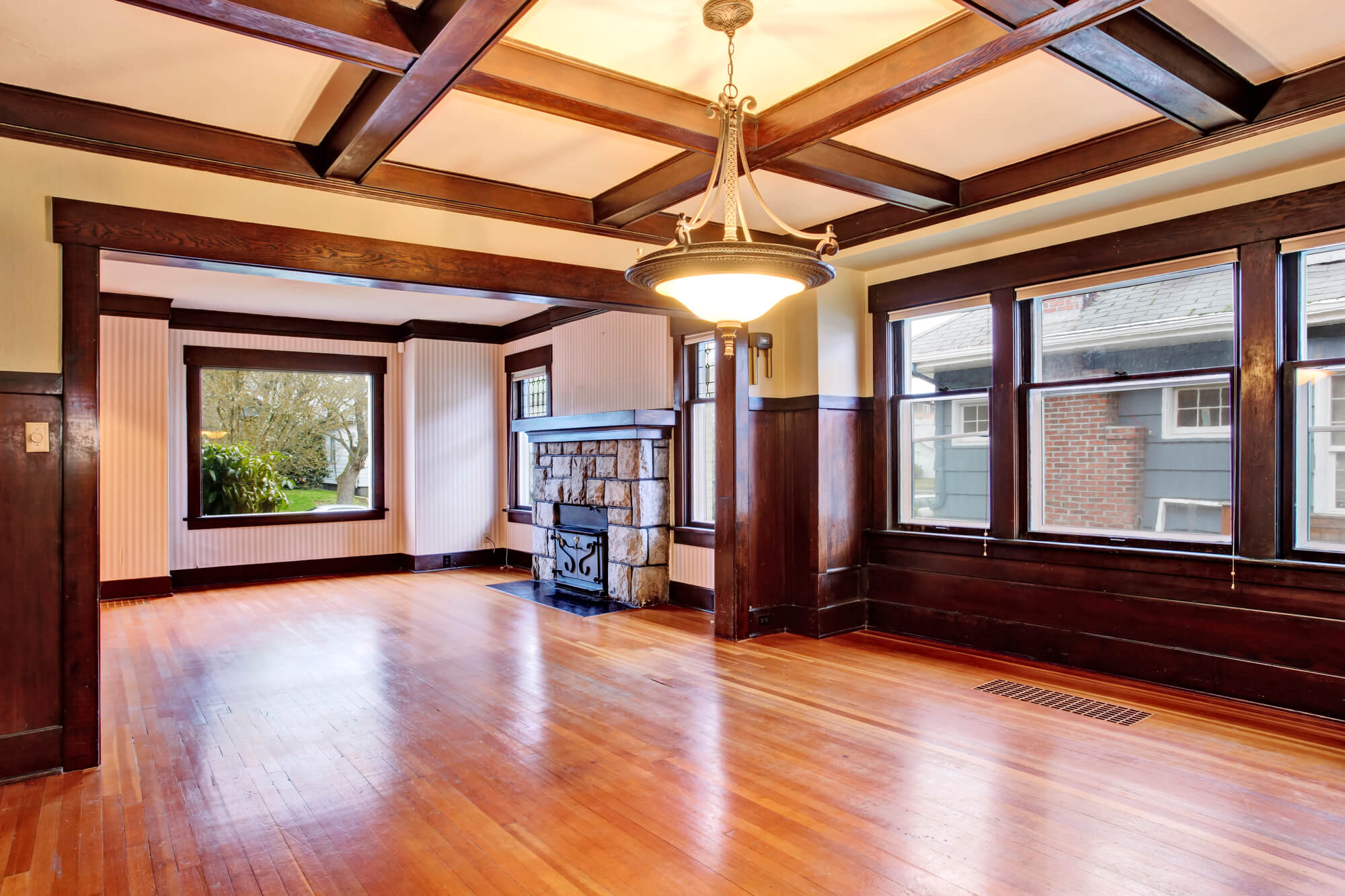

/ceiling-coffer-Versailles-535045152-crop-59d2cf3b845b3400111d2ae7.jpg)
